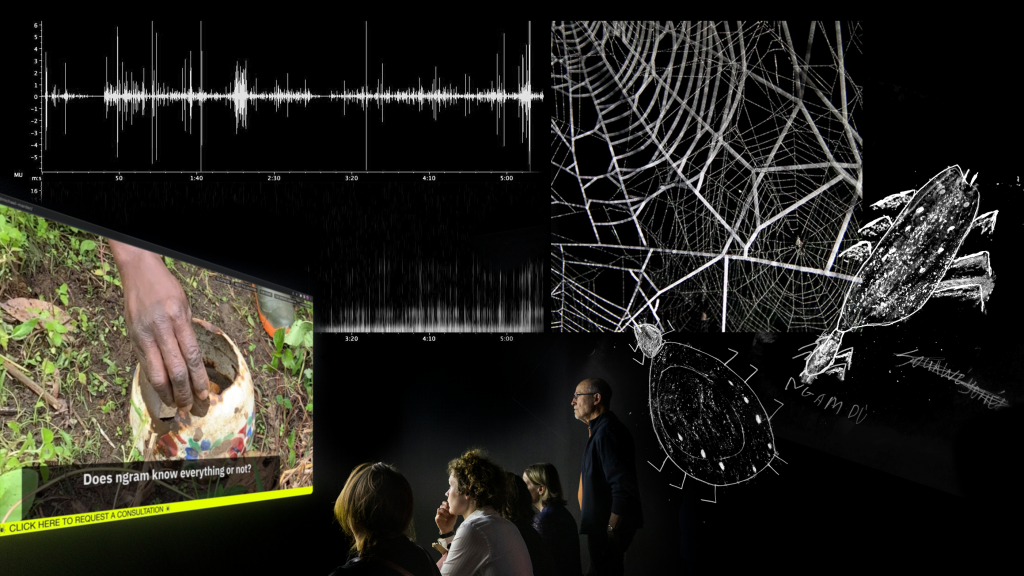

...


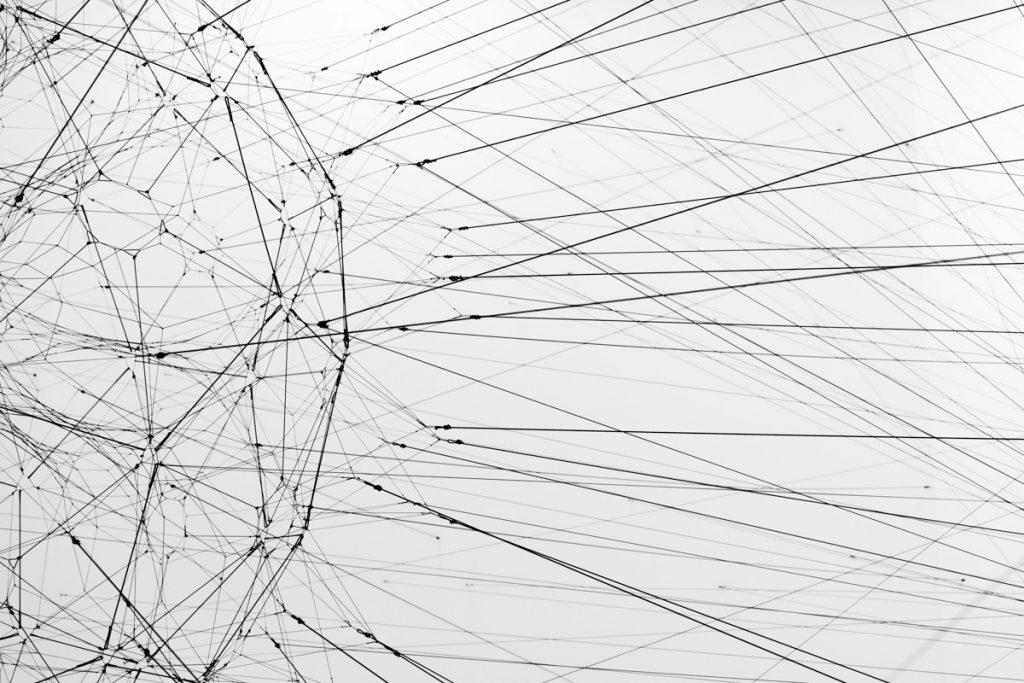
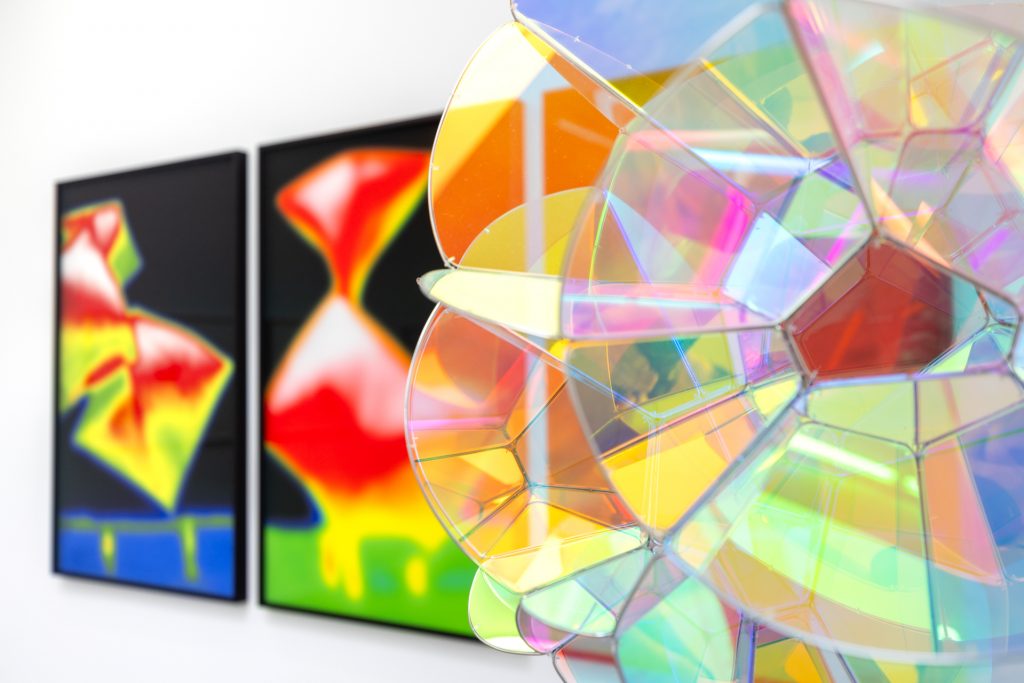



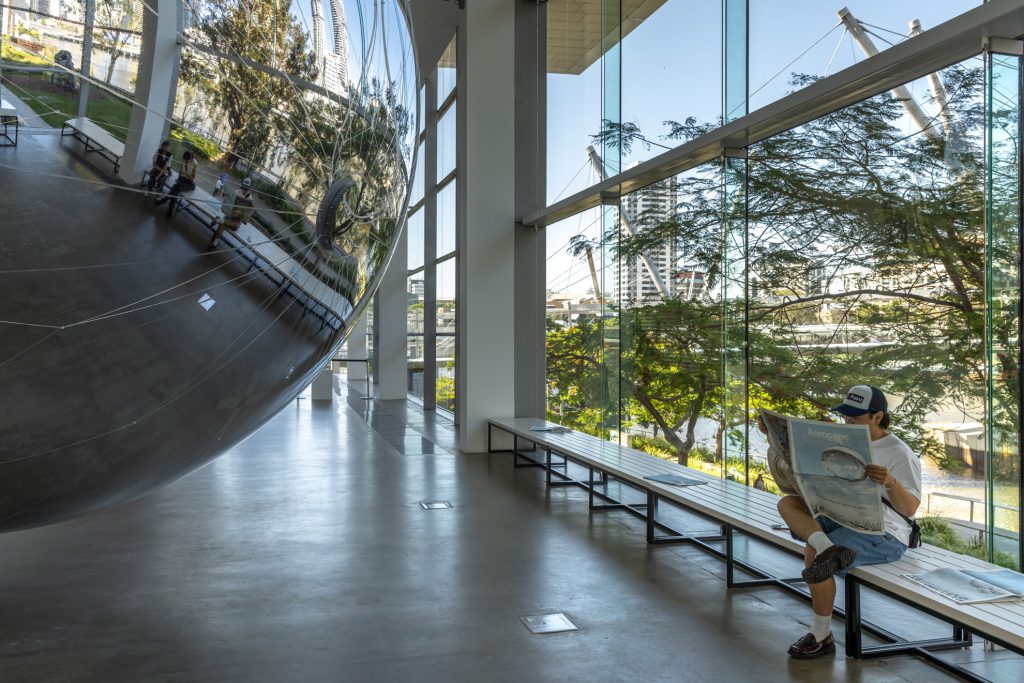
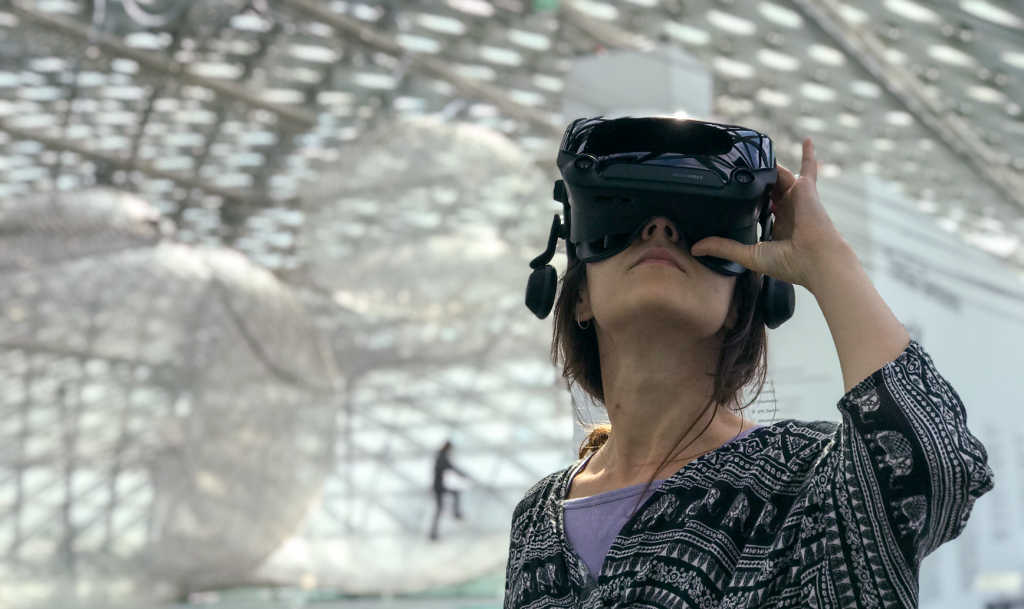
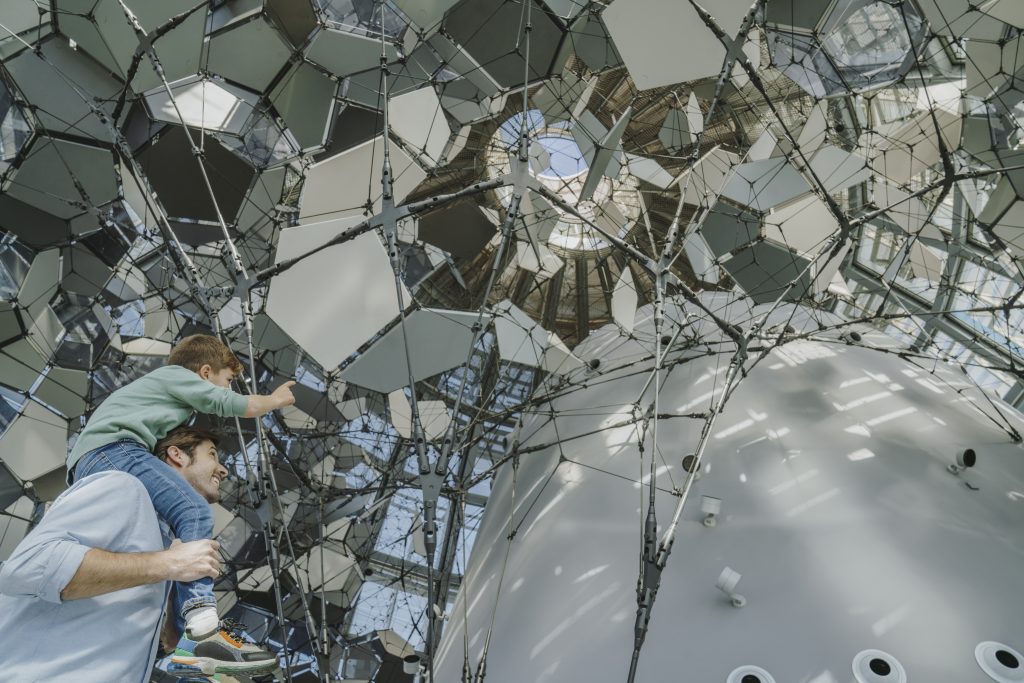

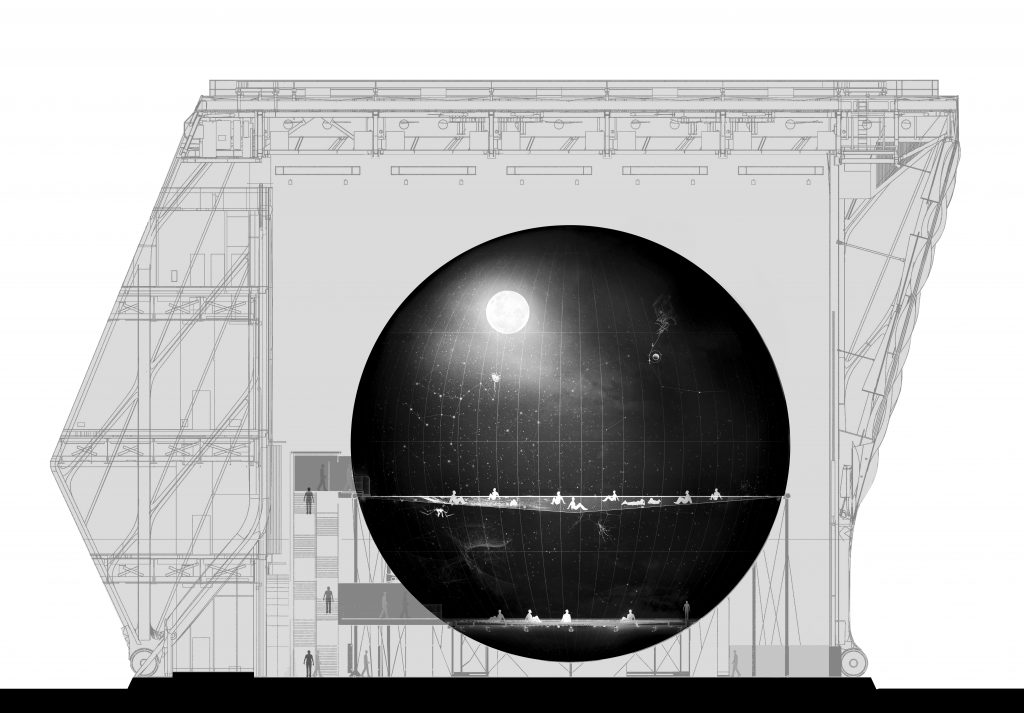
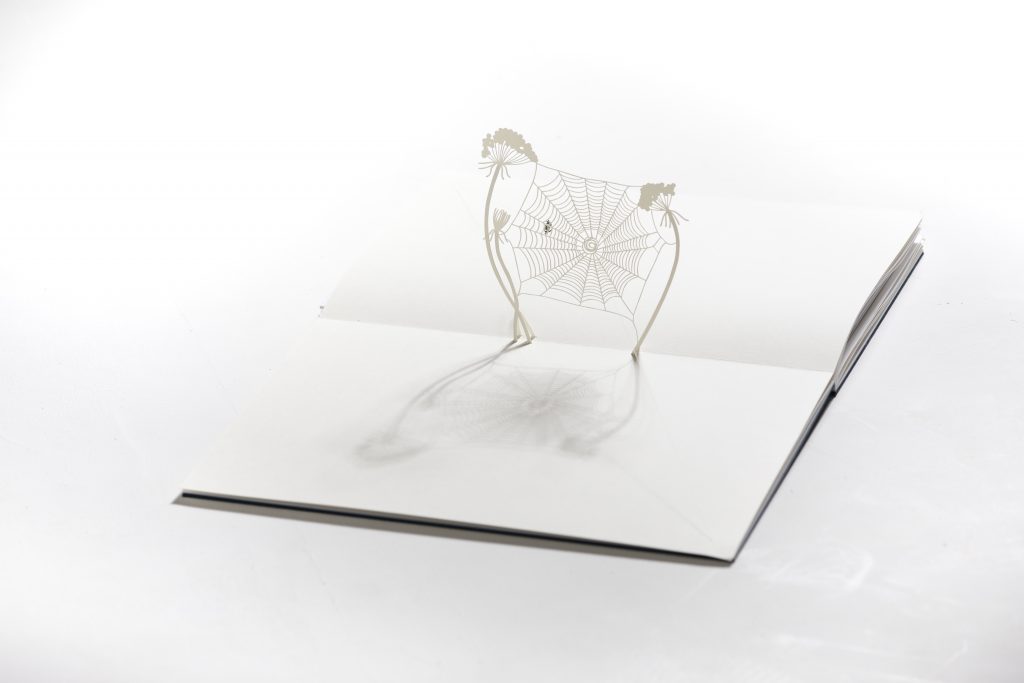

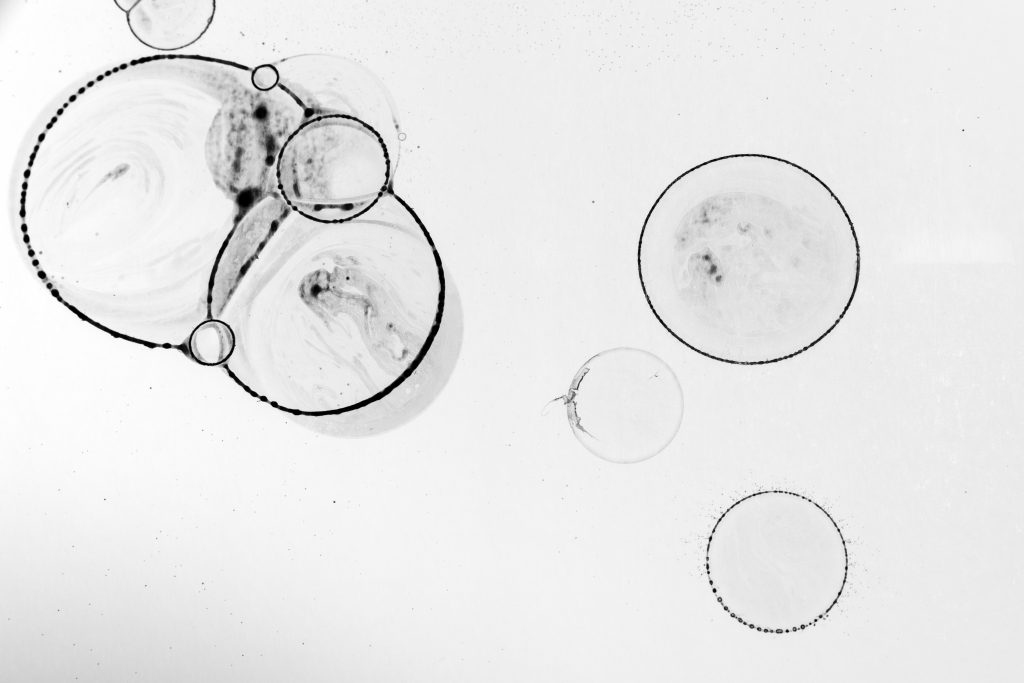
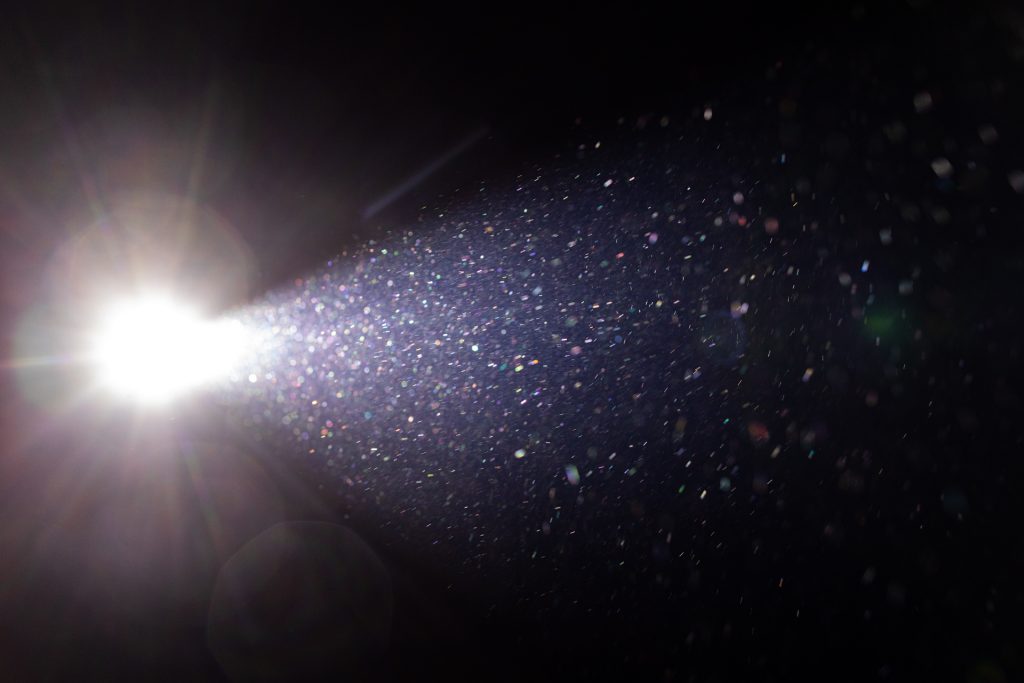

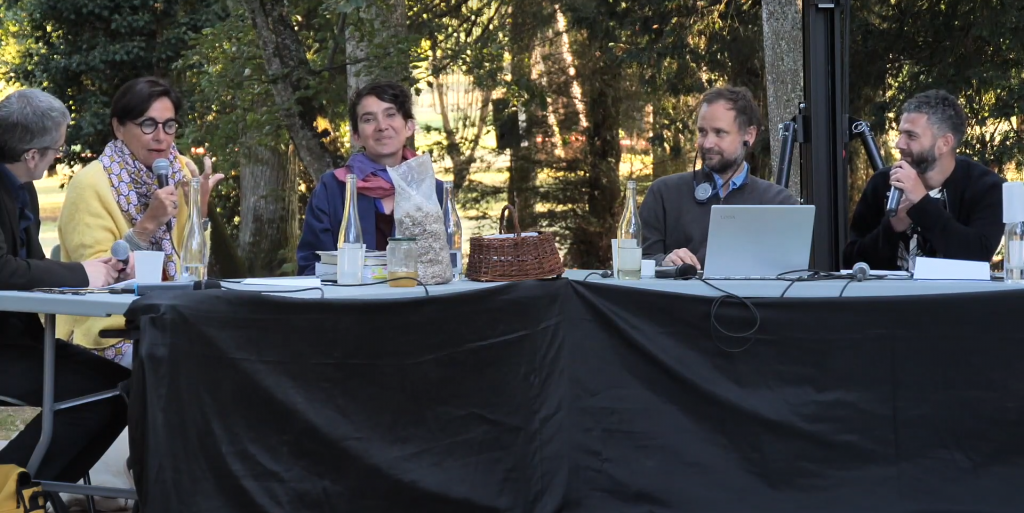


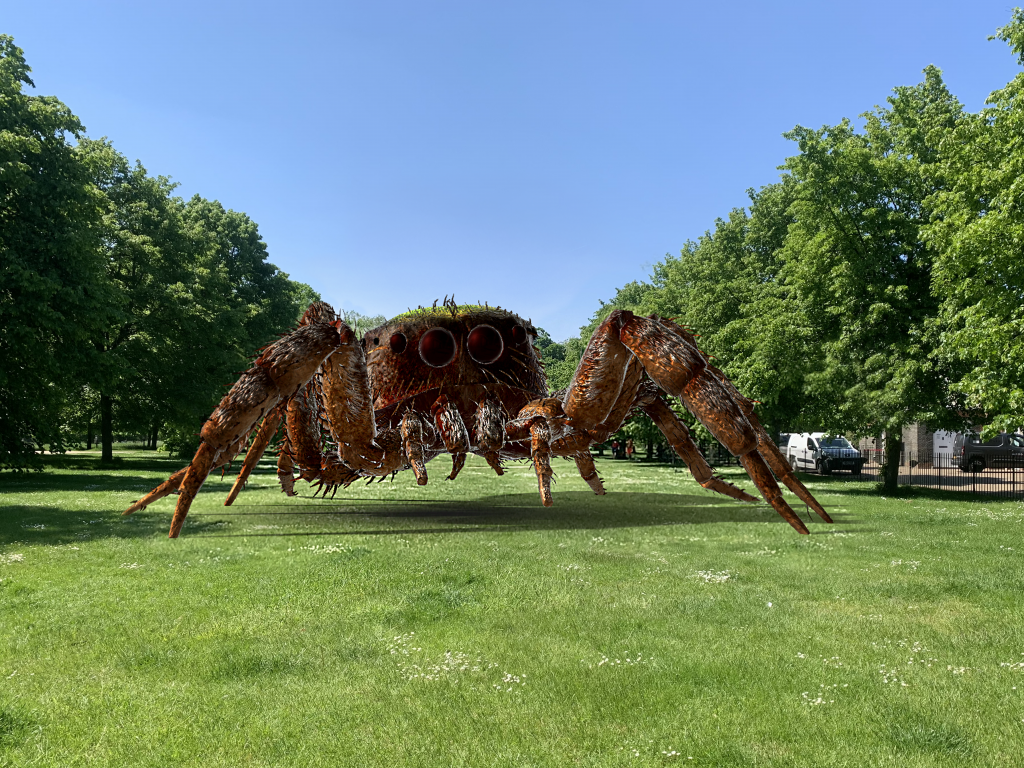
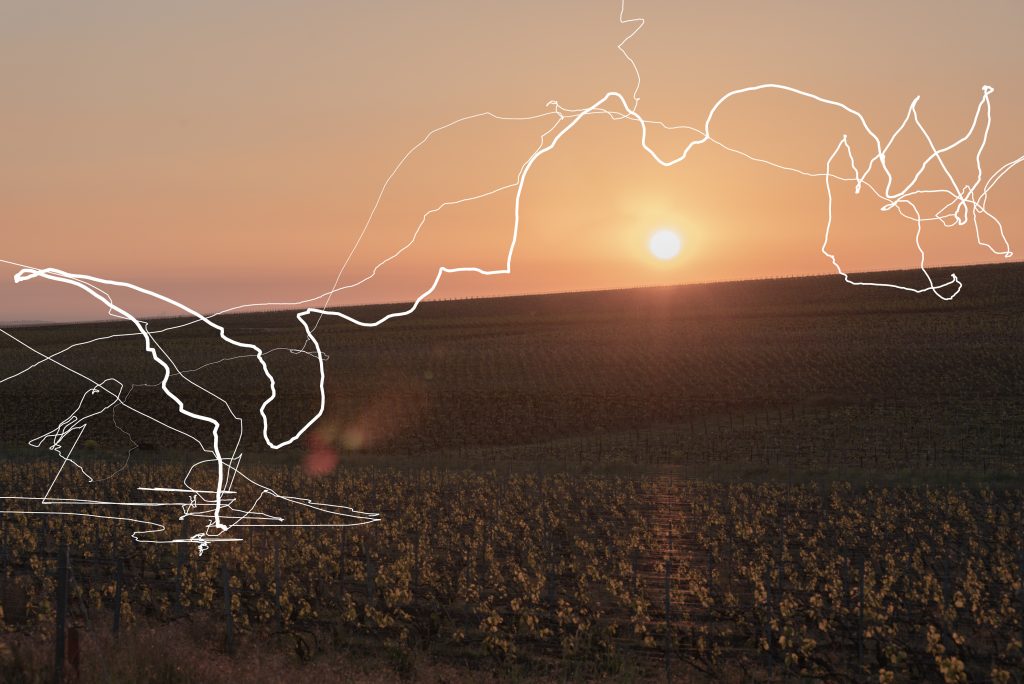

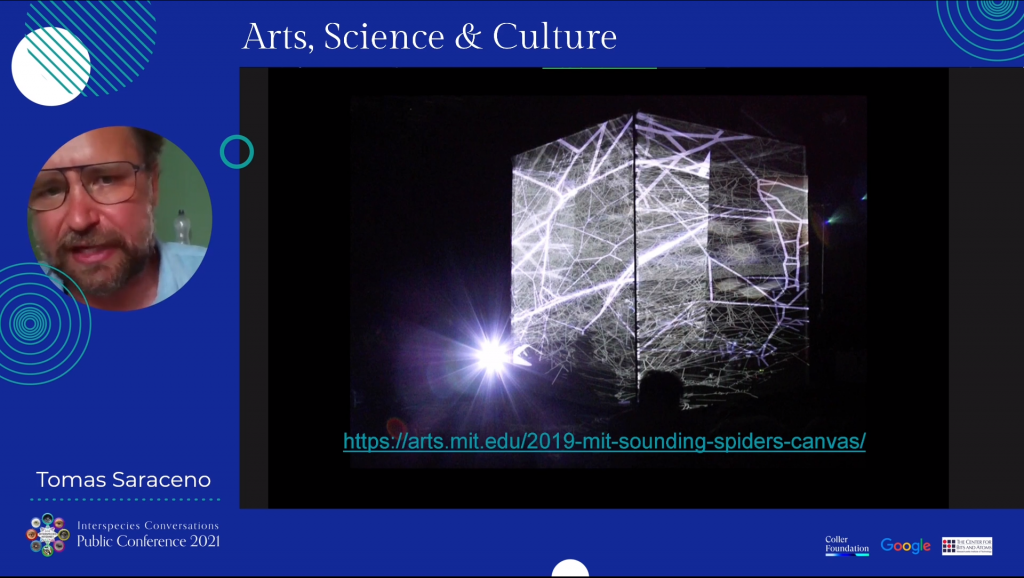
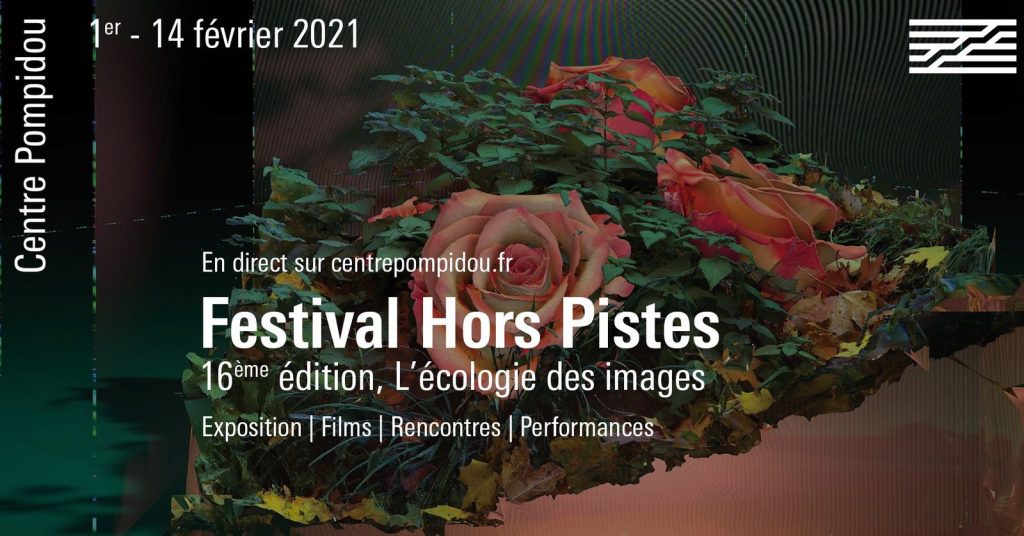





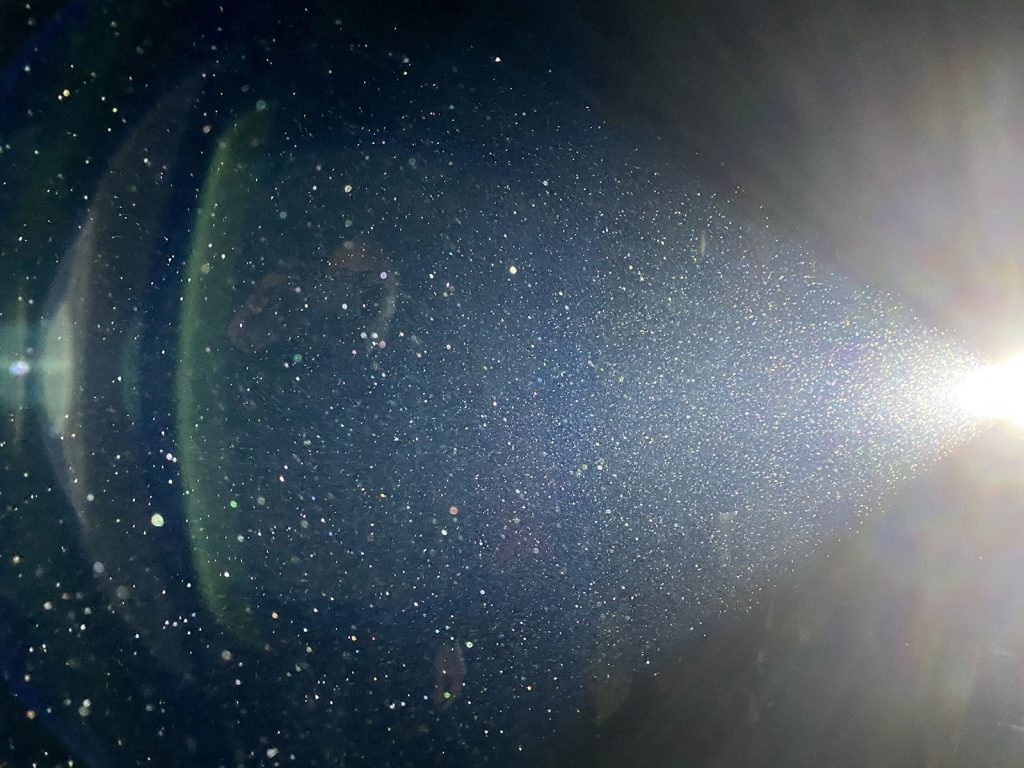
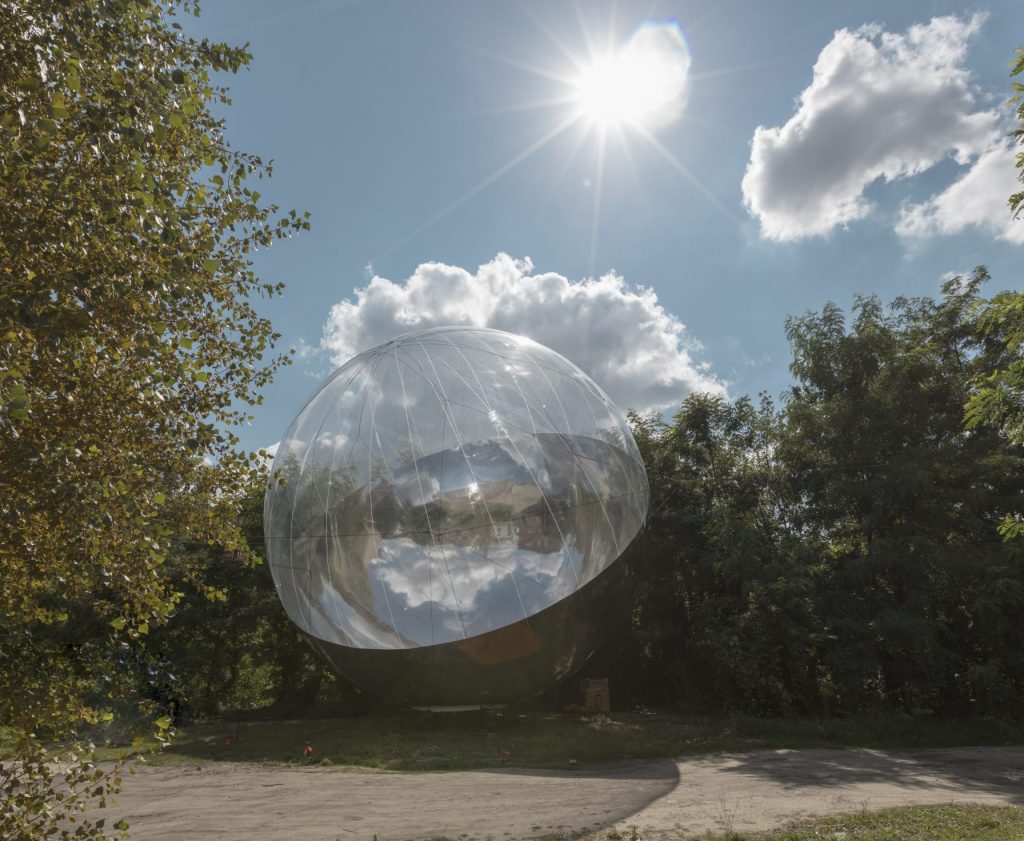
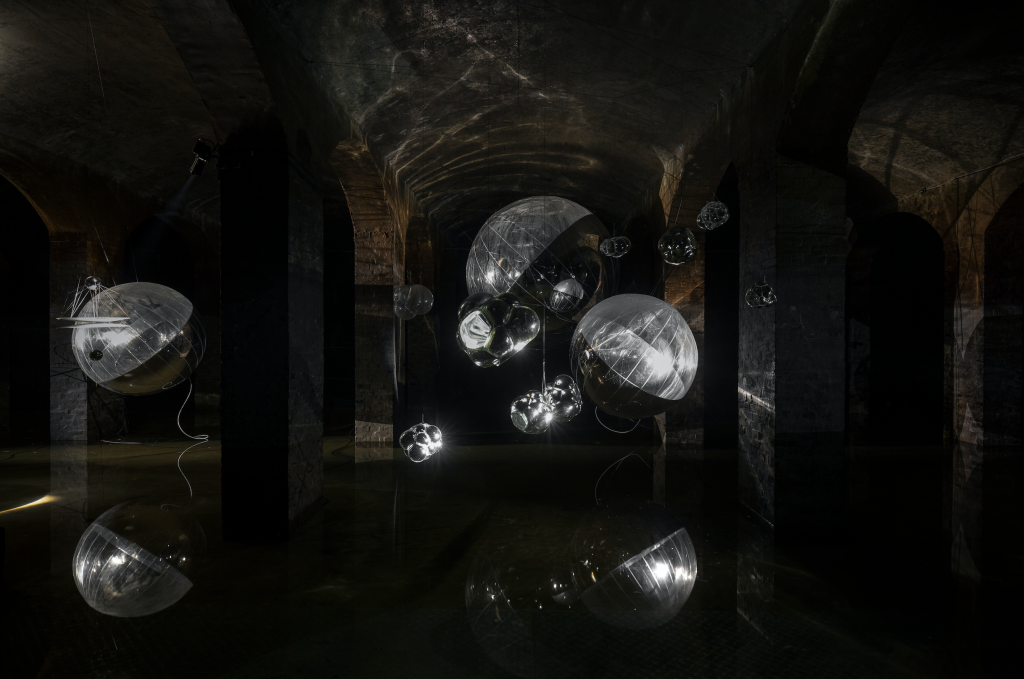
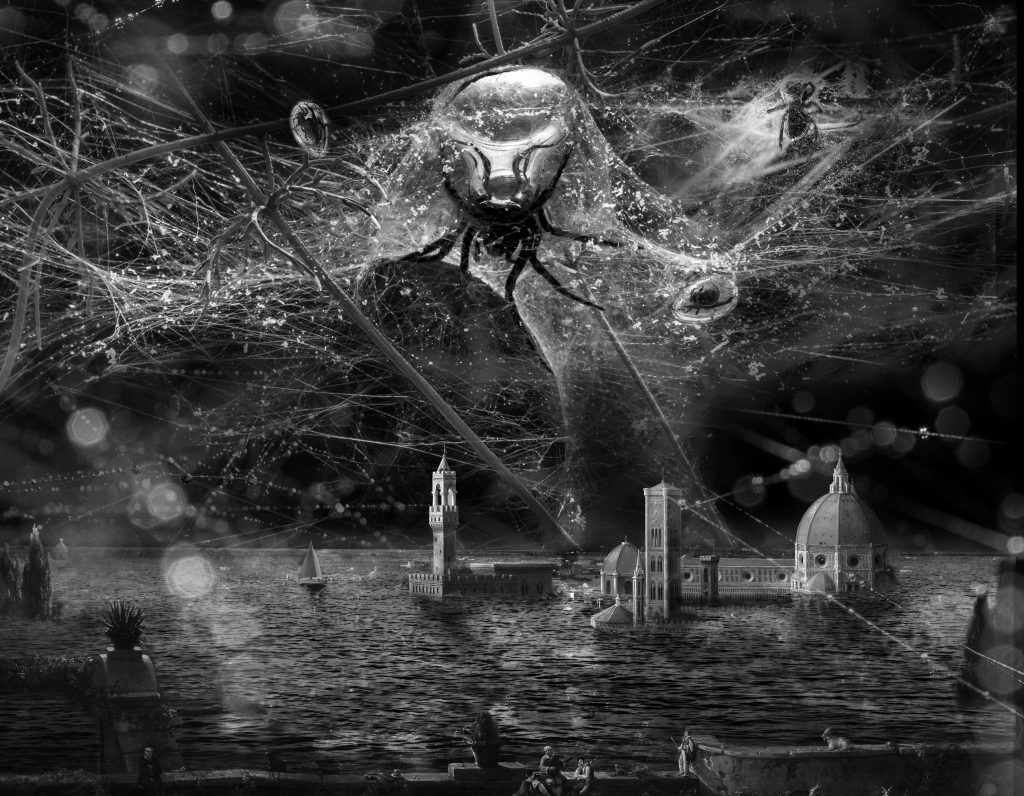
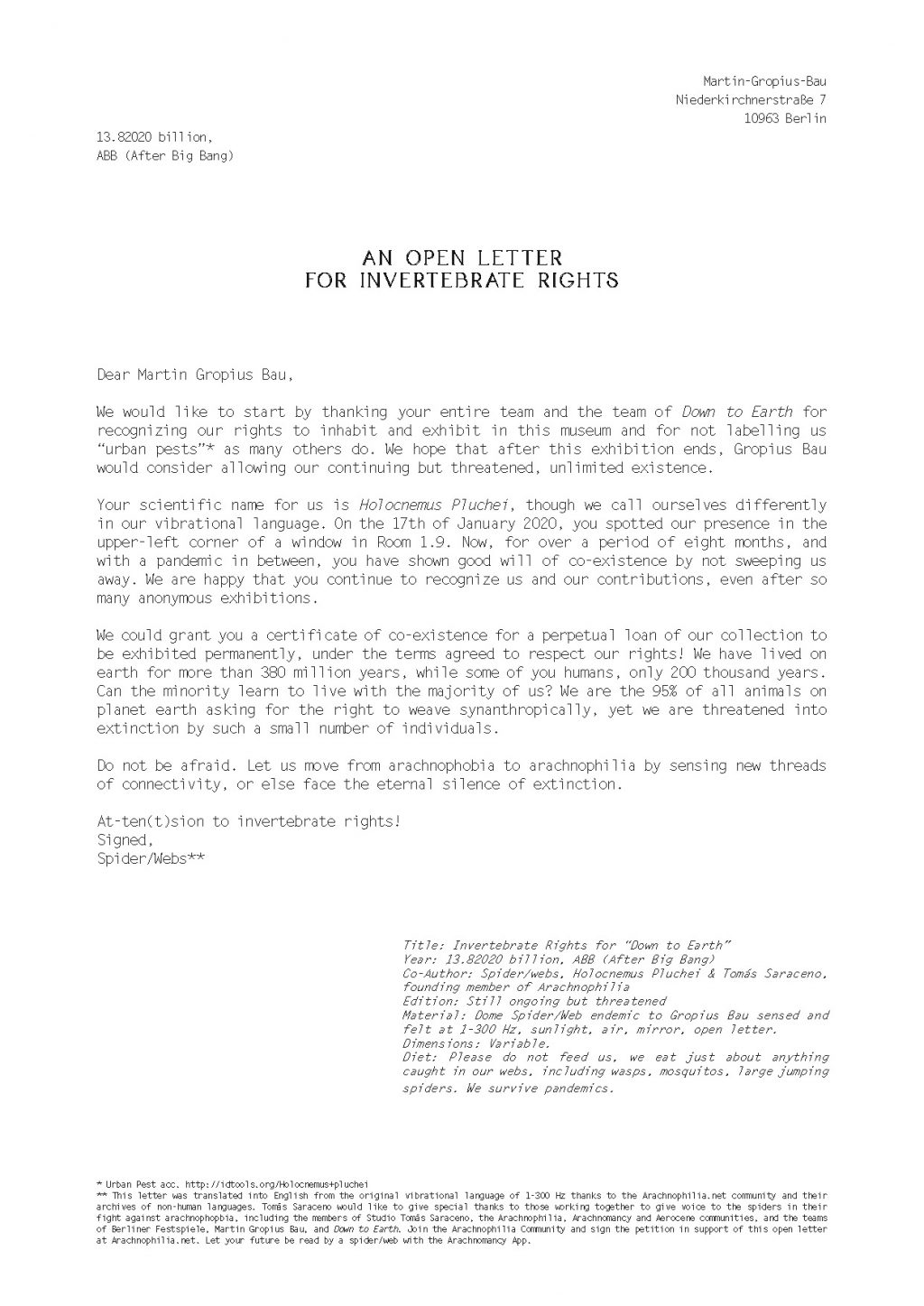
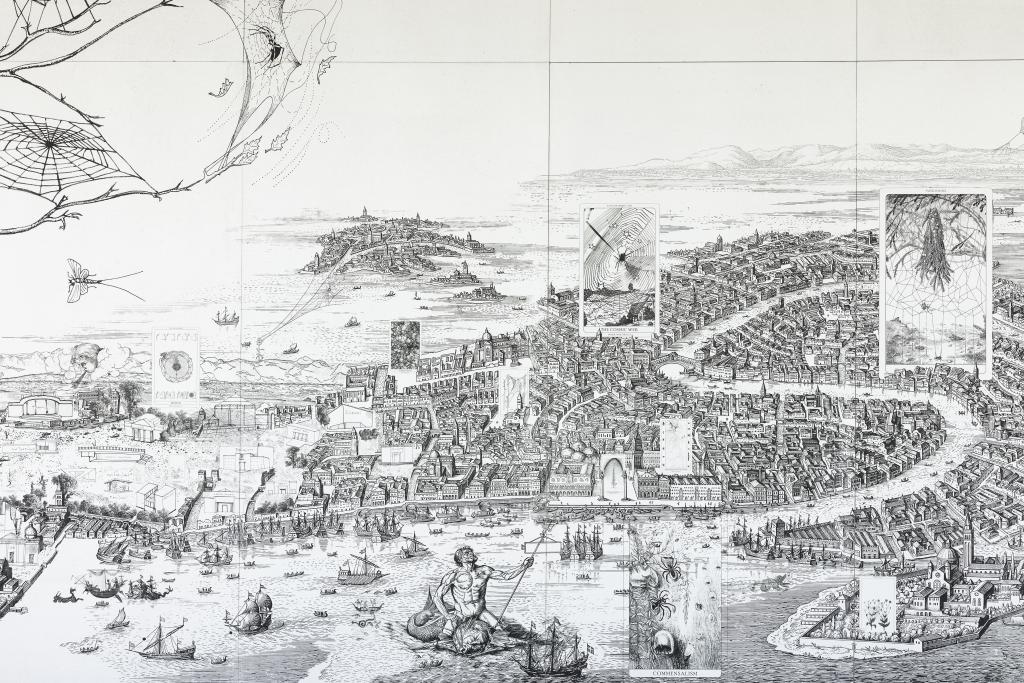
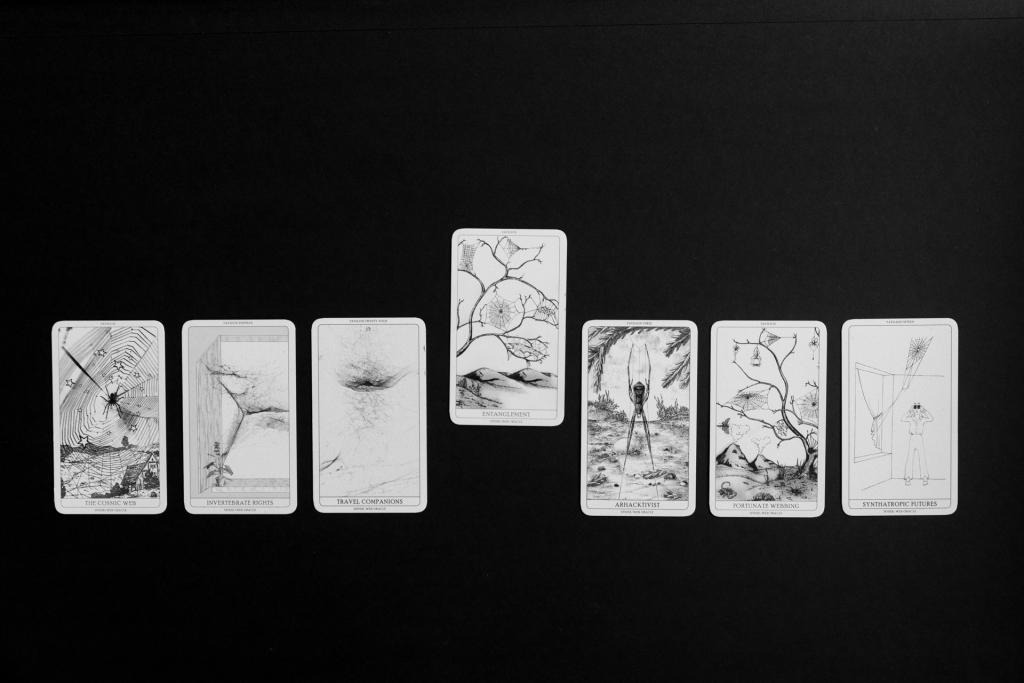

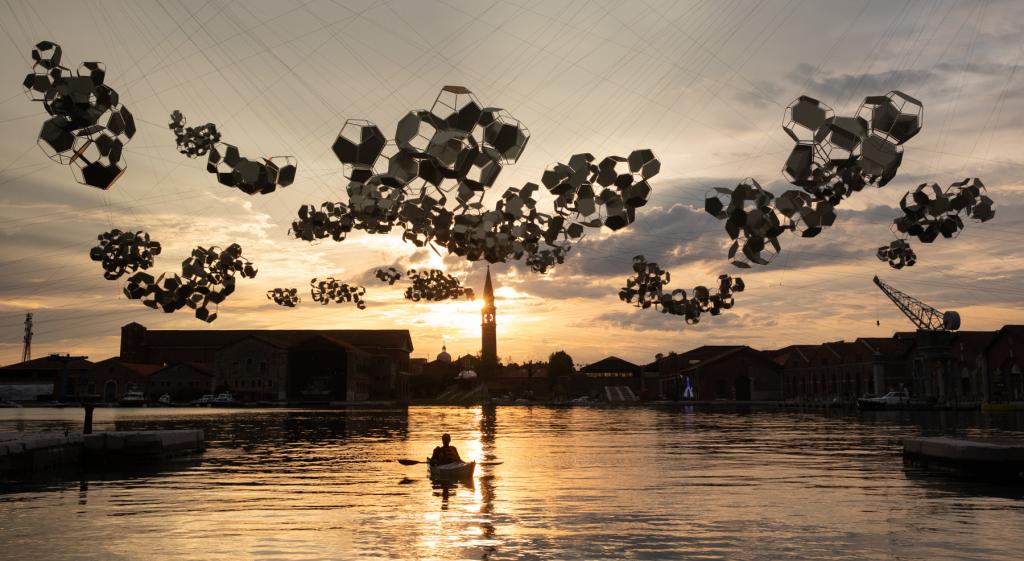
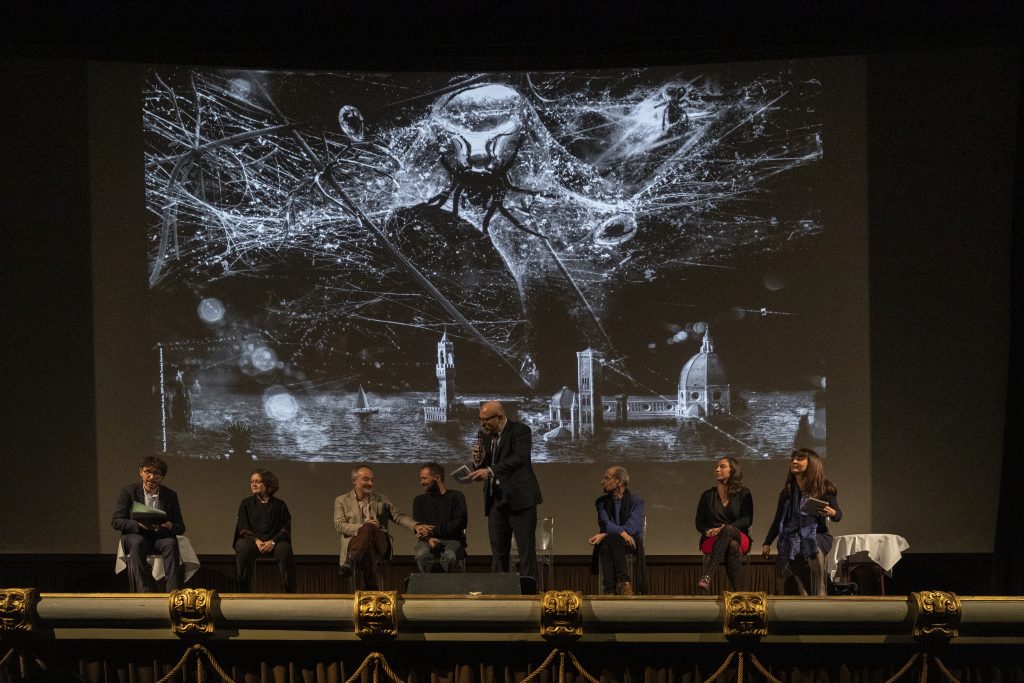
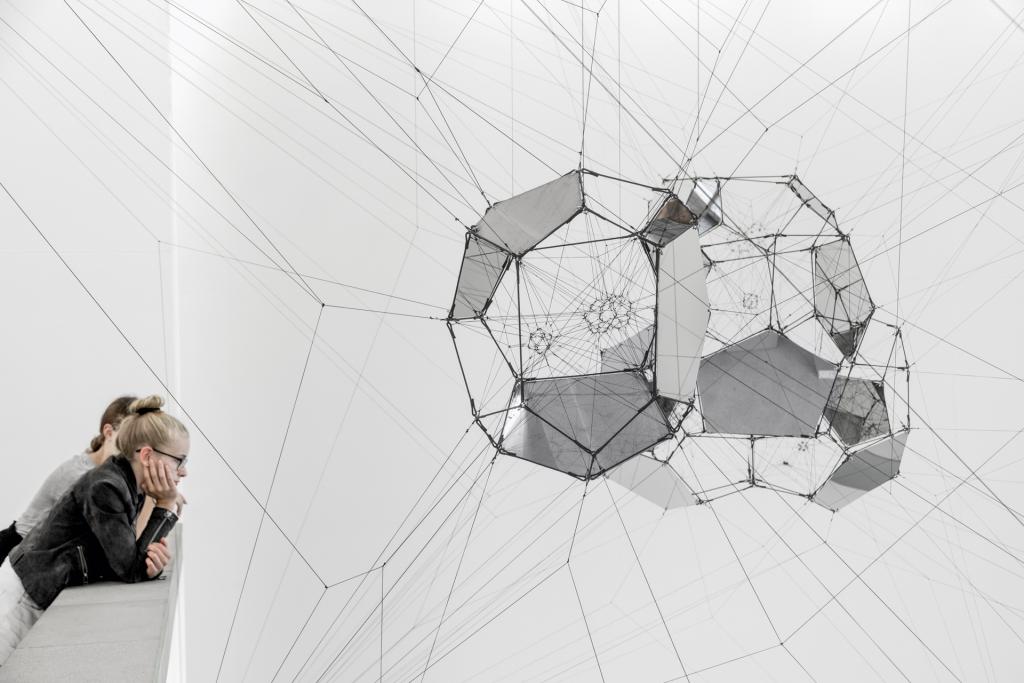

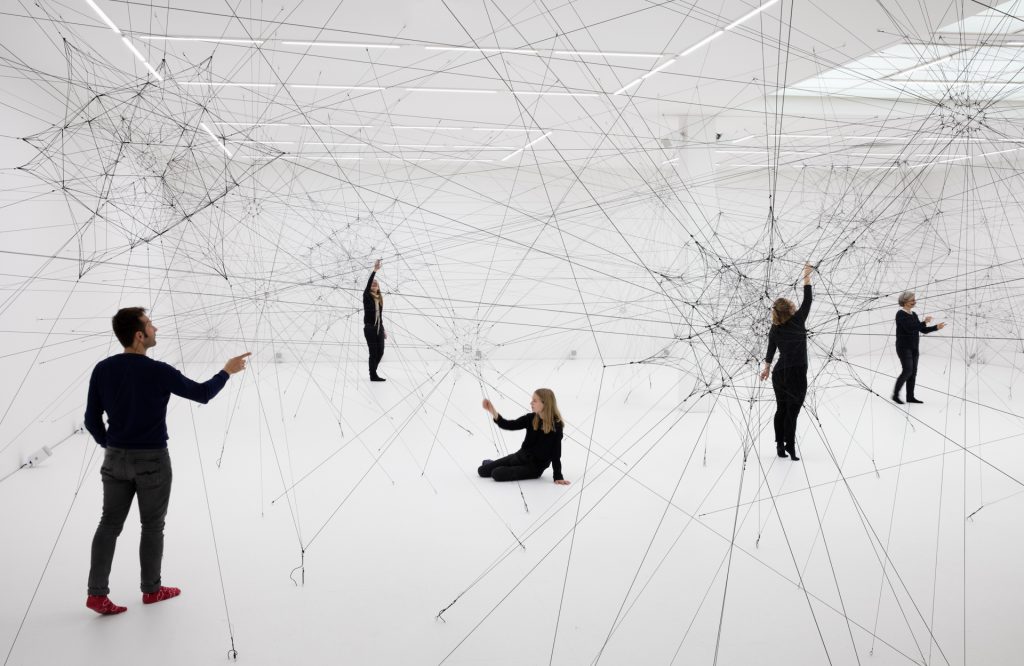
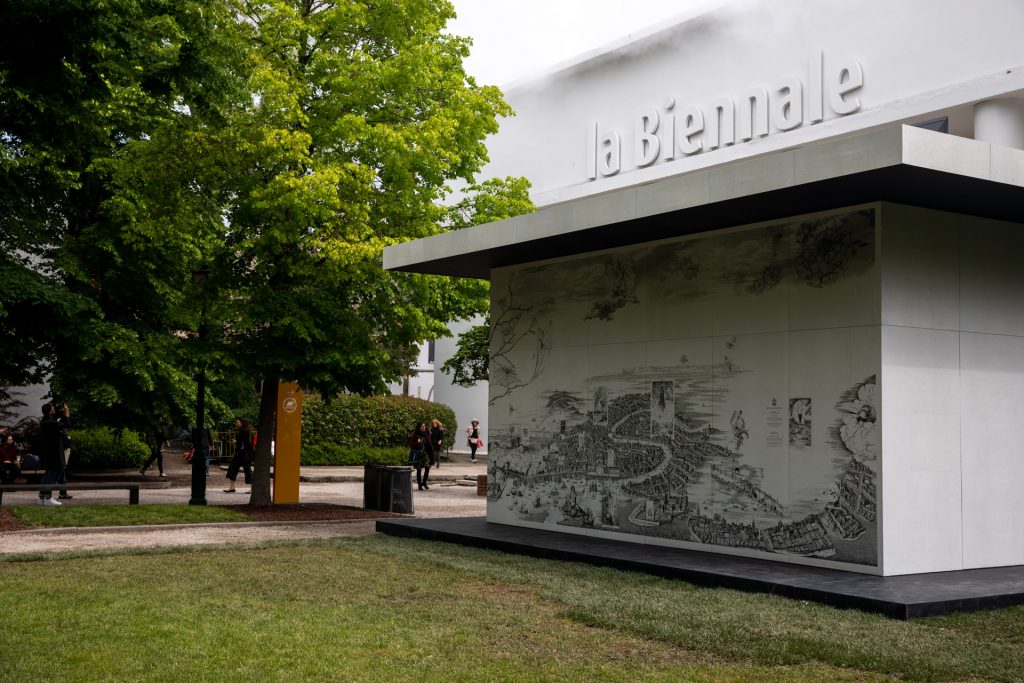
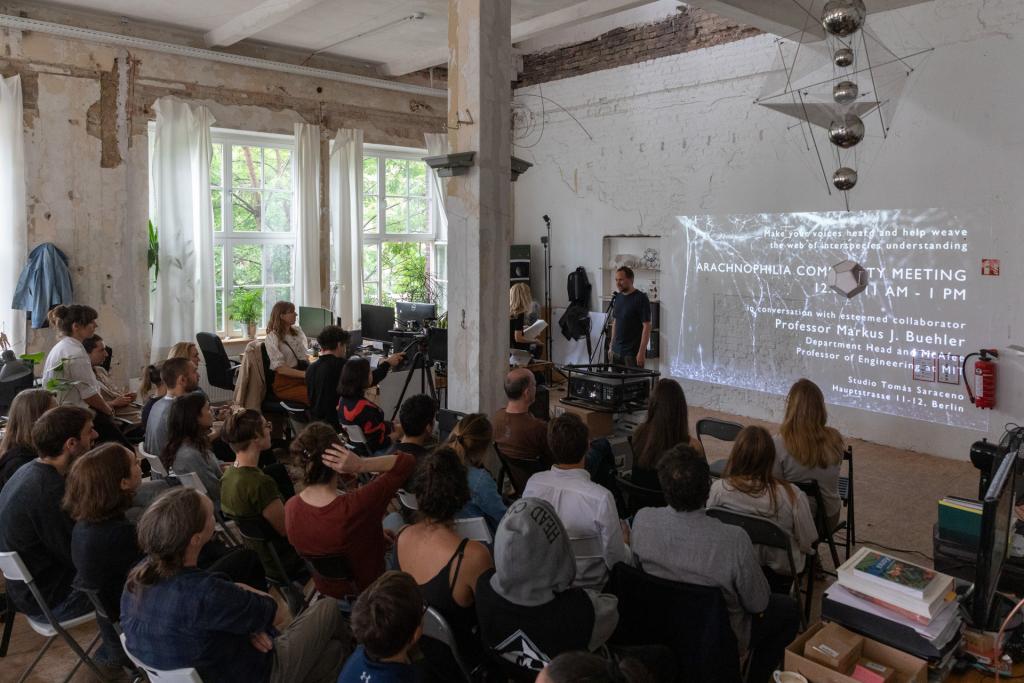
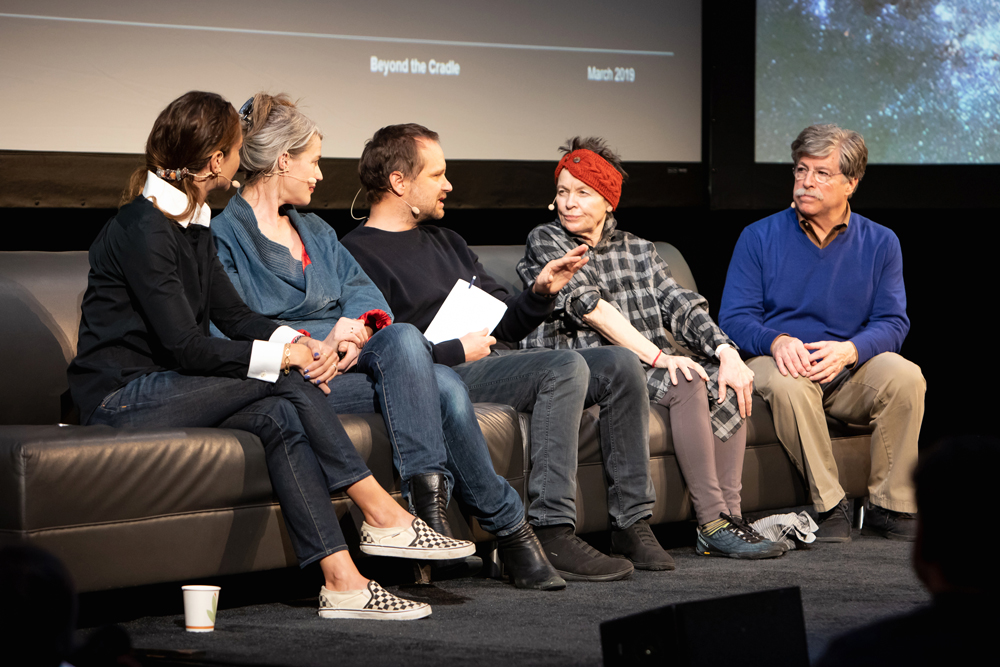
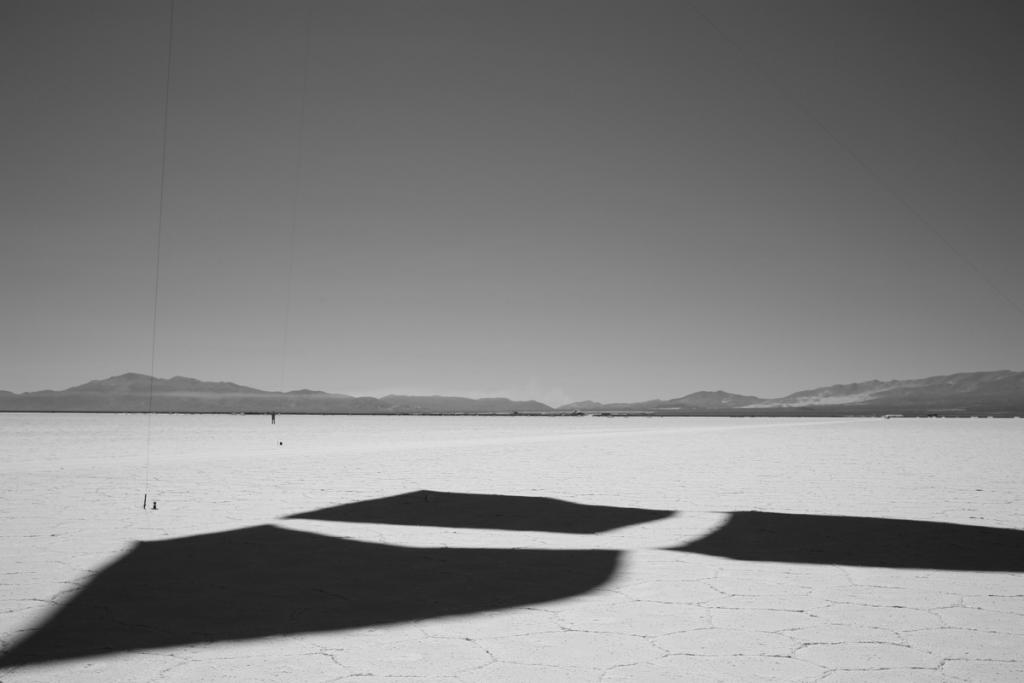
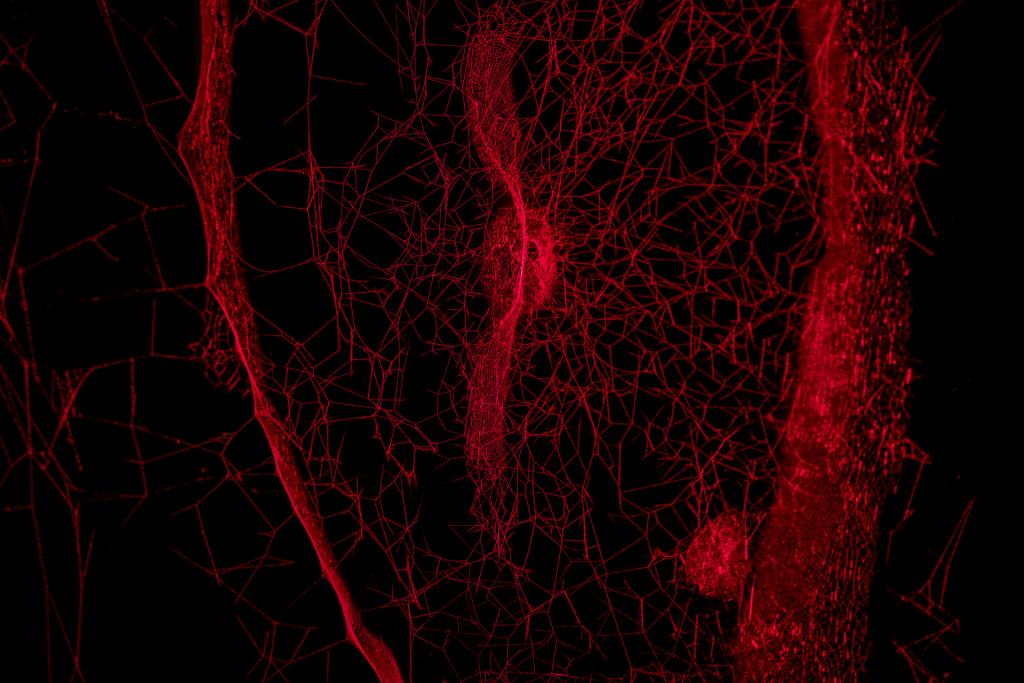
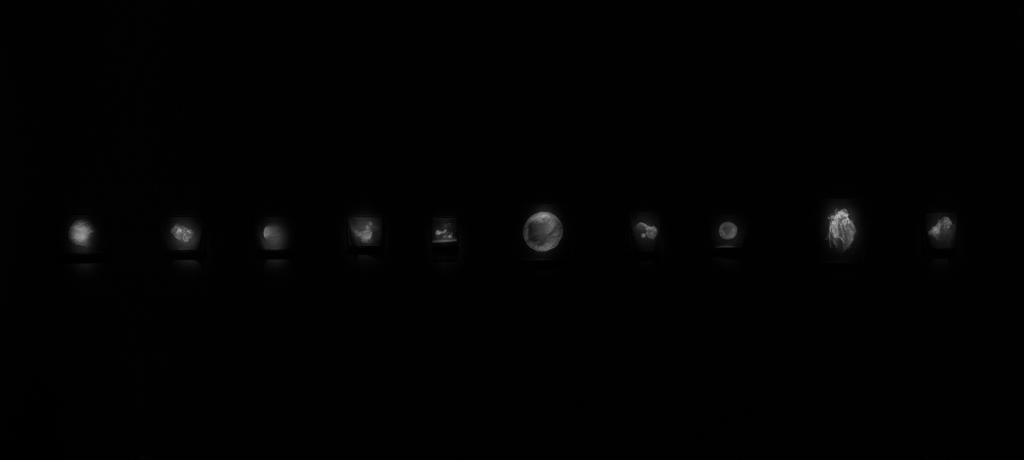
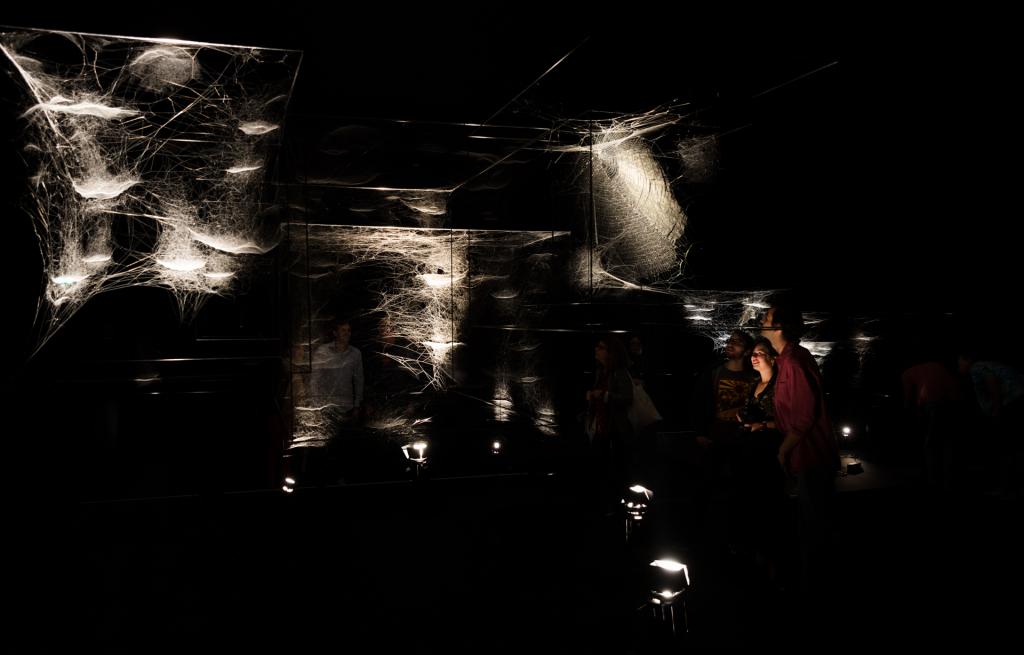

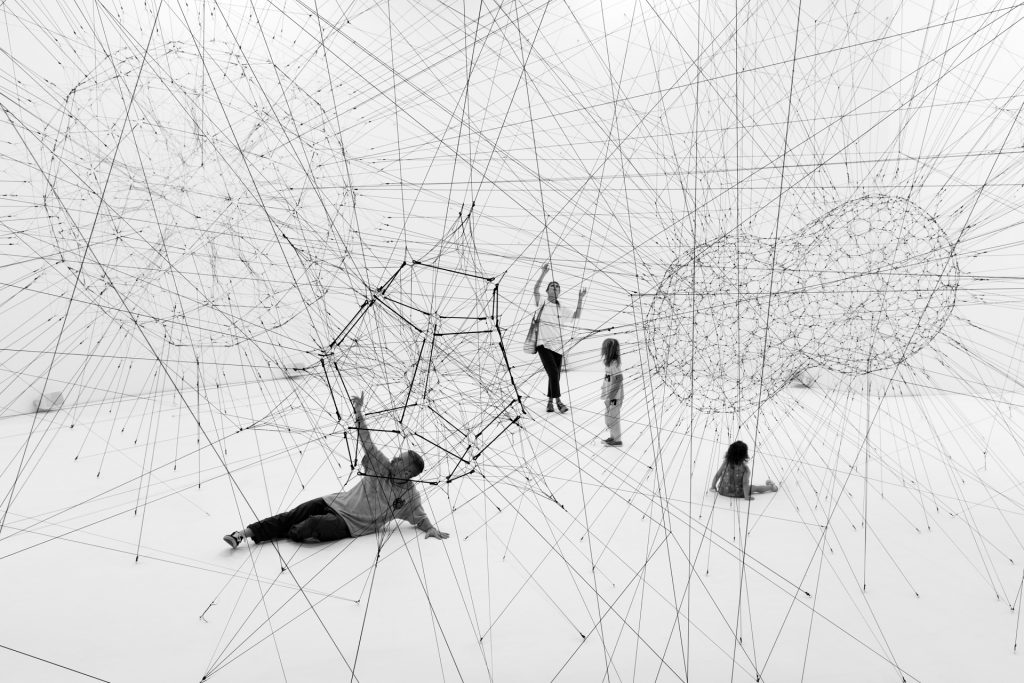
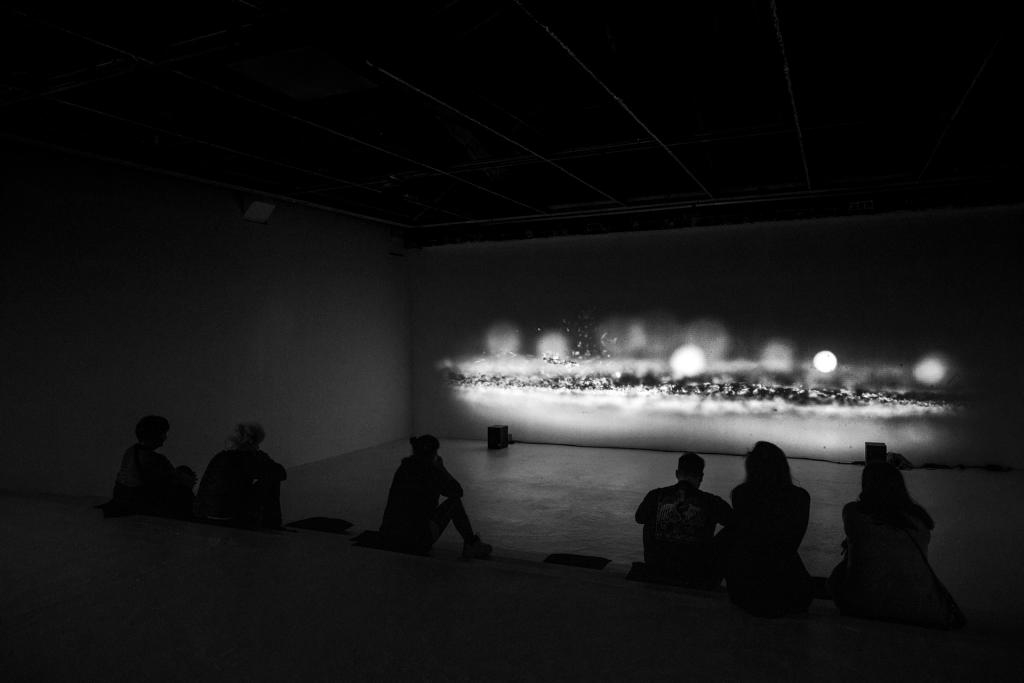
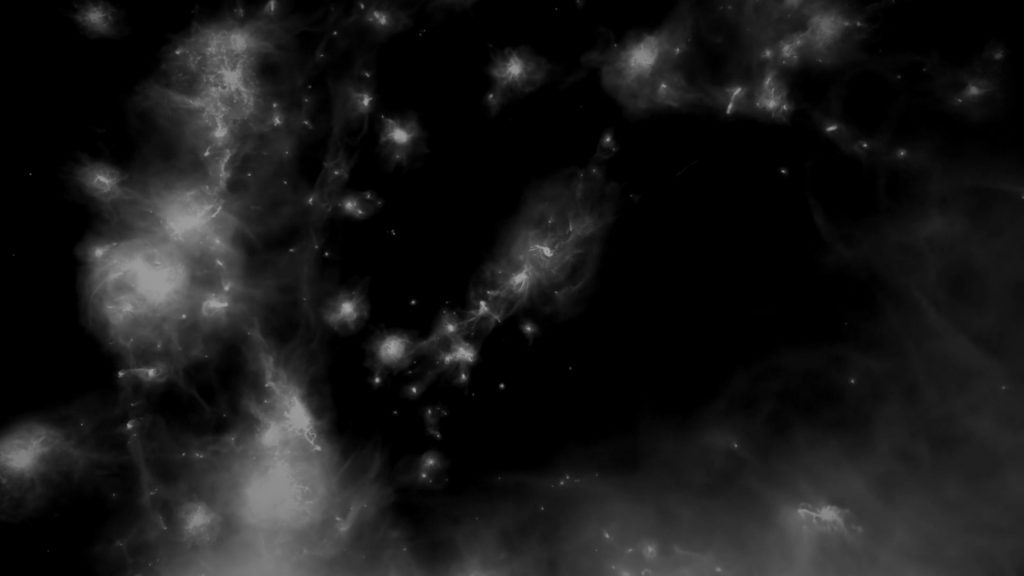
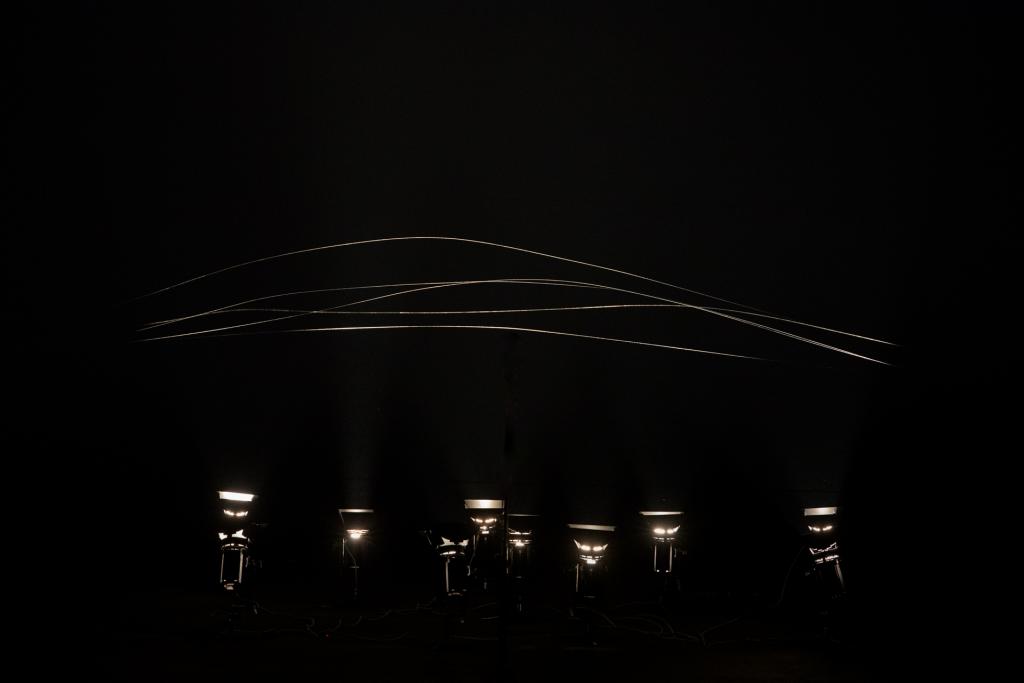

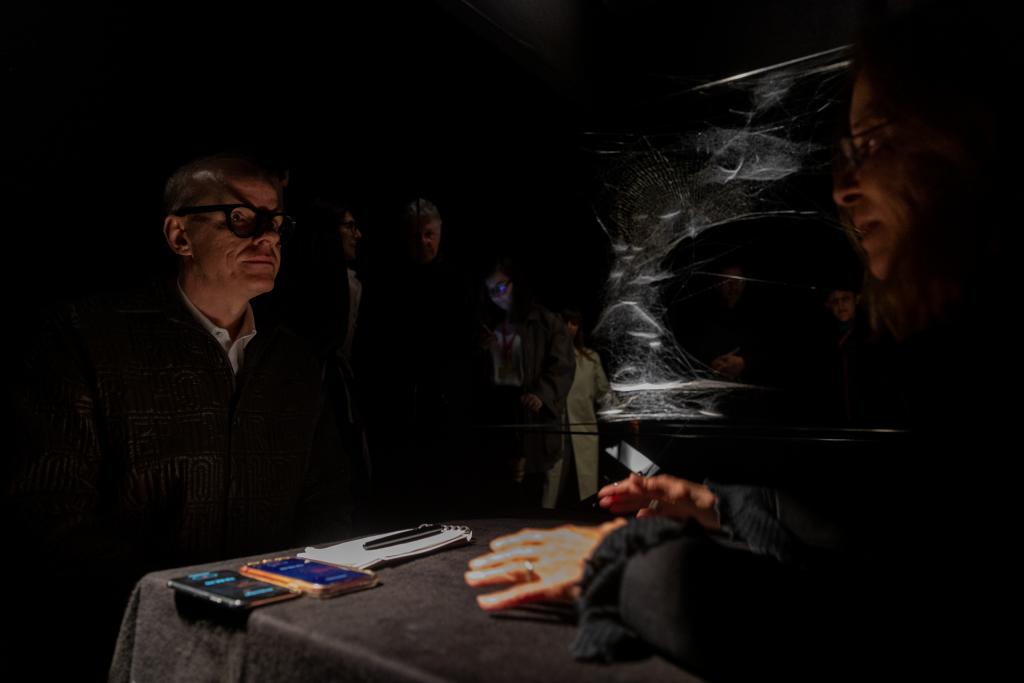
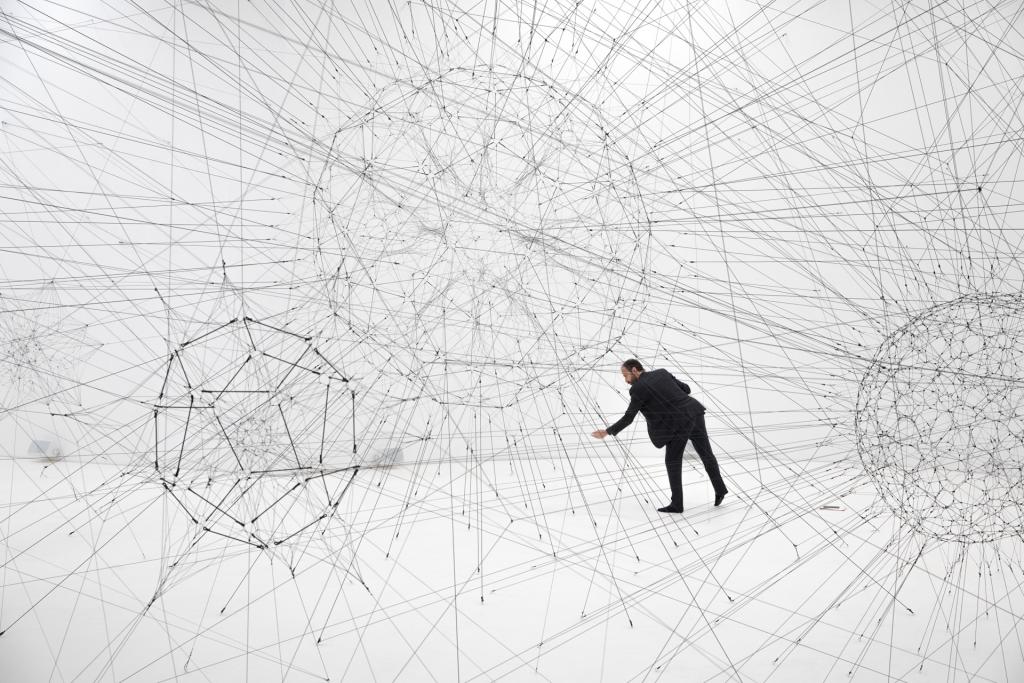

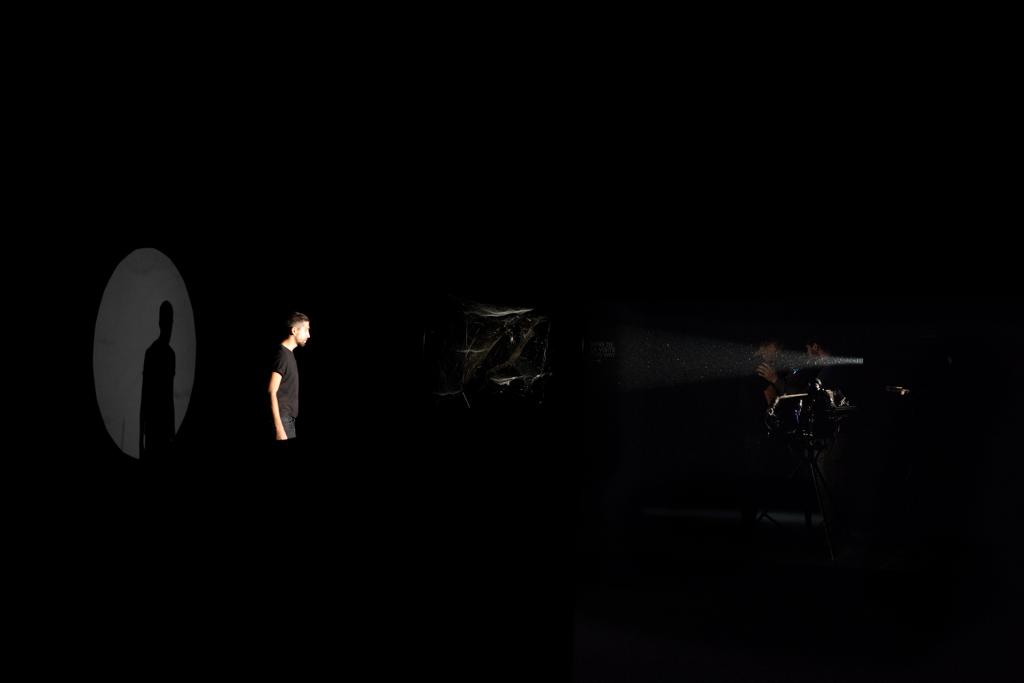
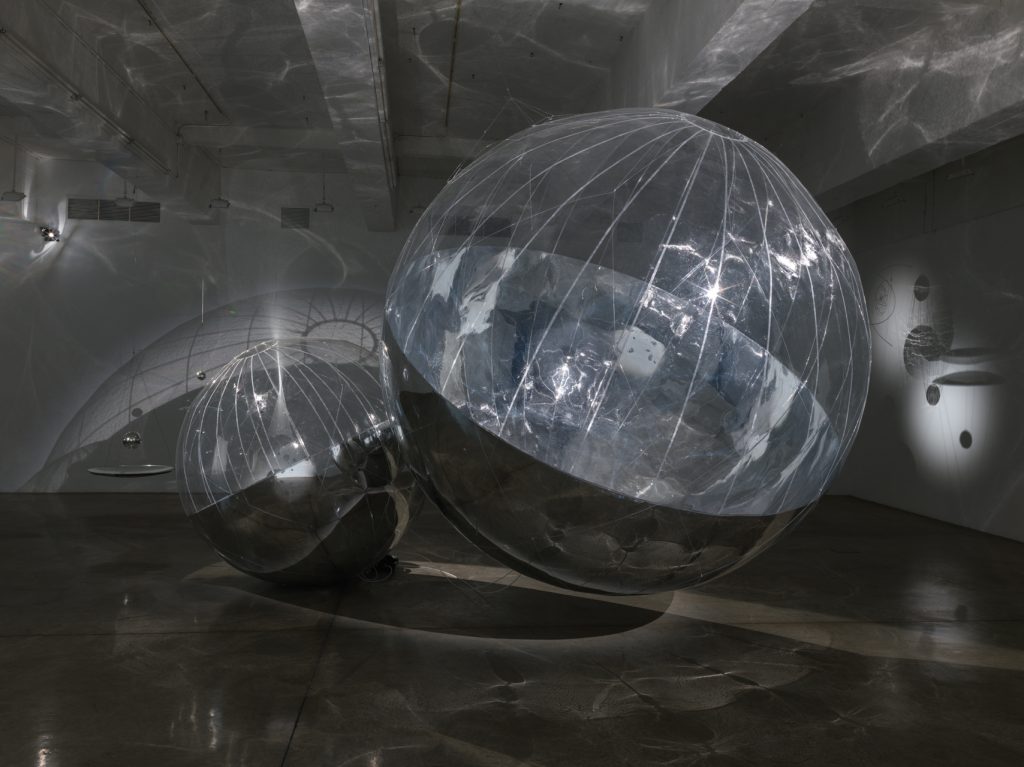
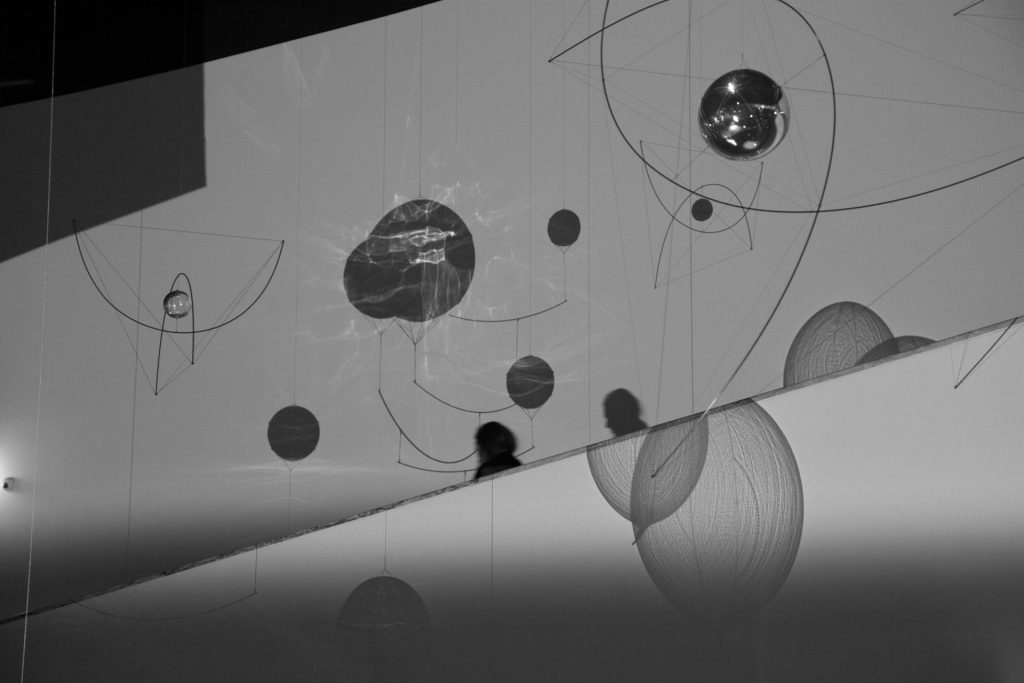
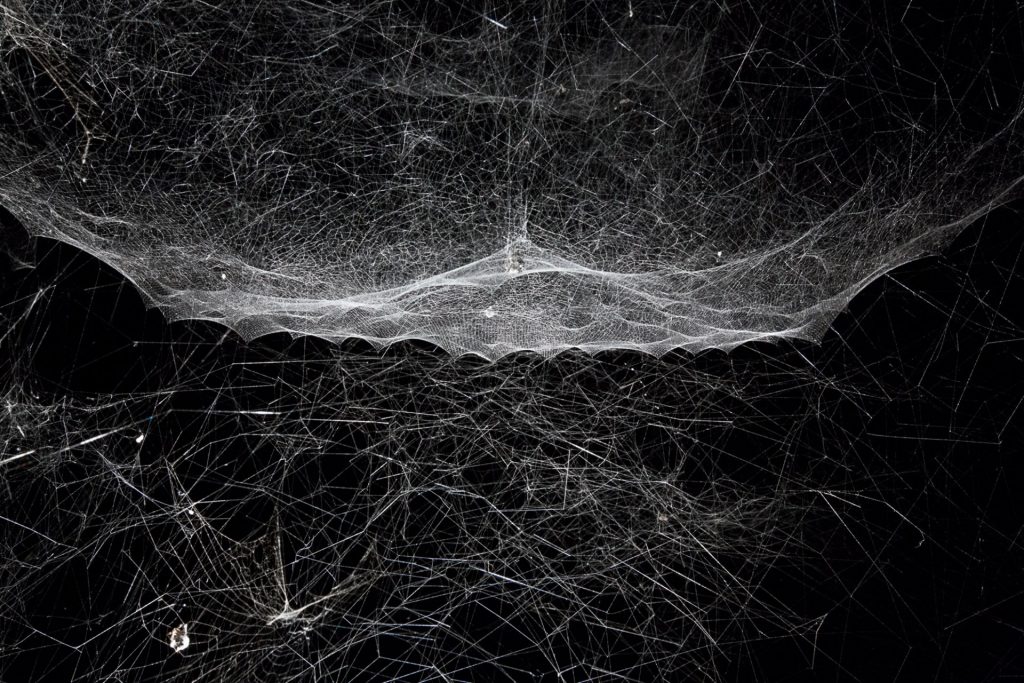
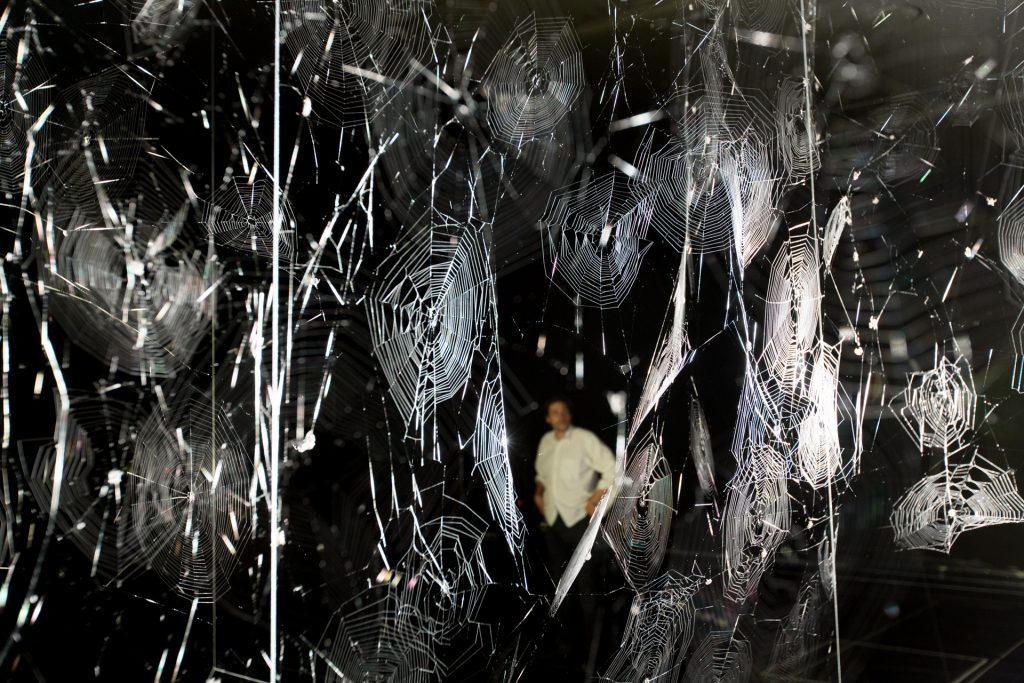

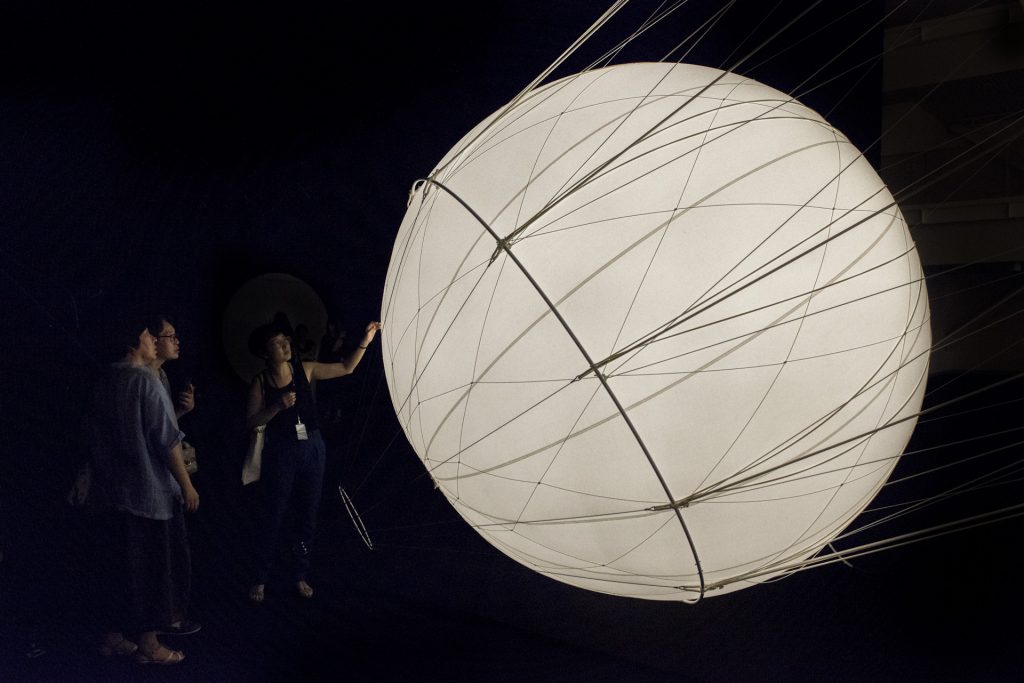

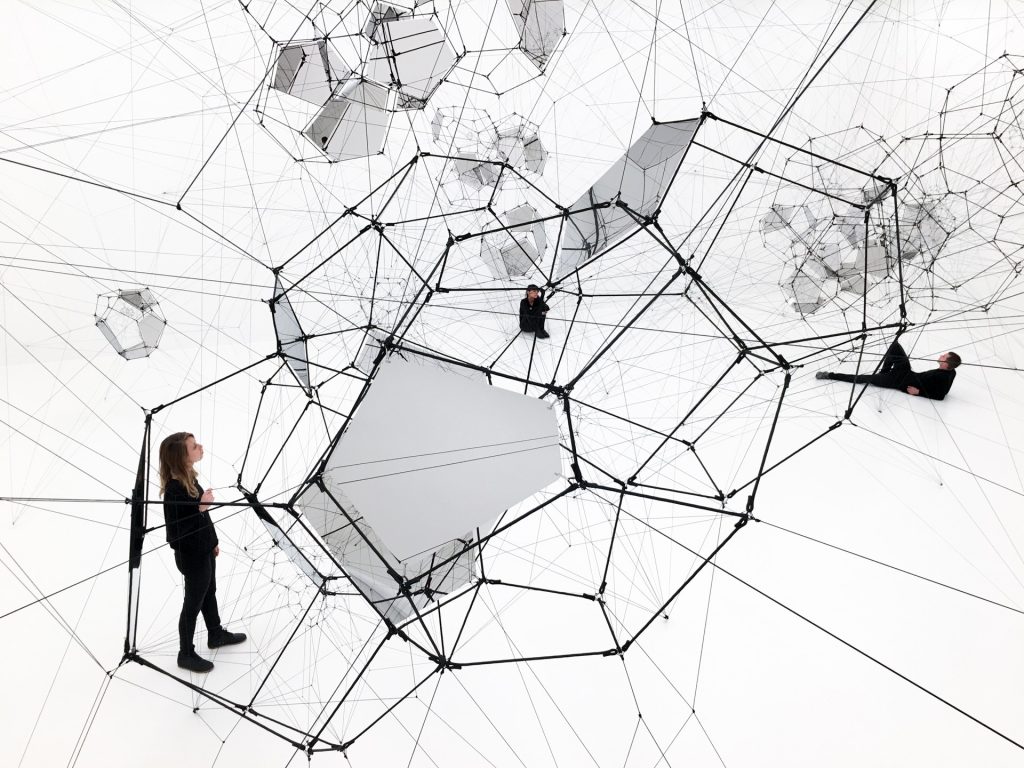
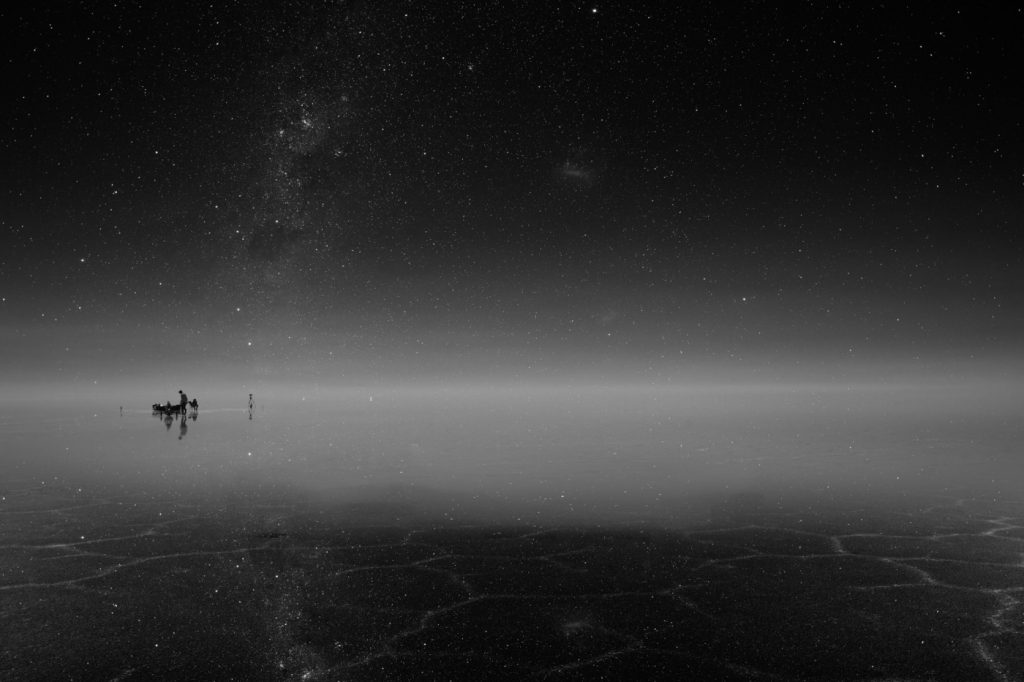
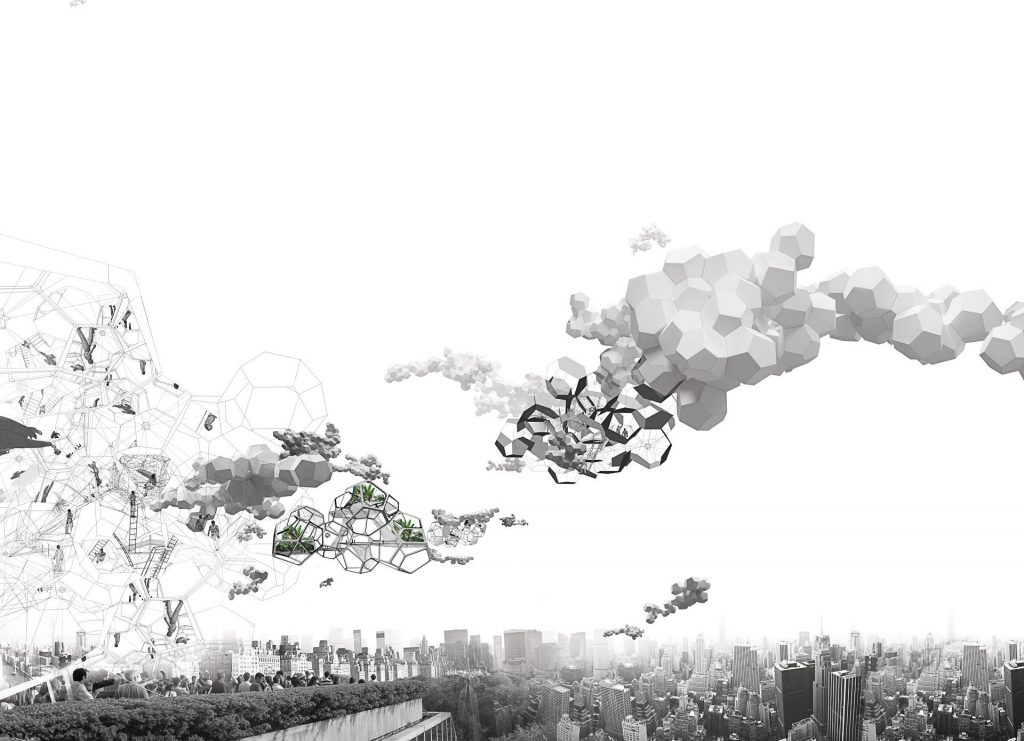
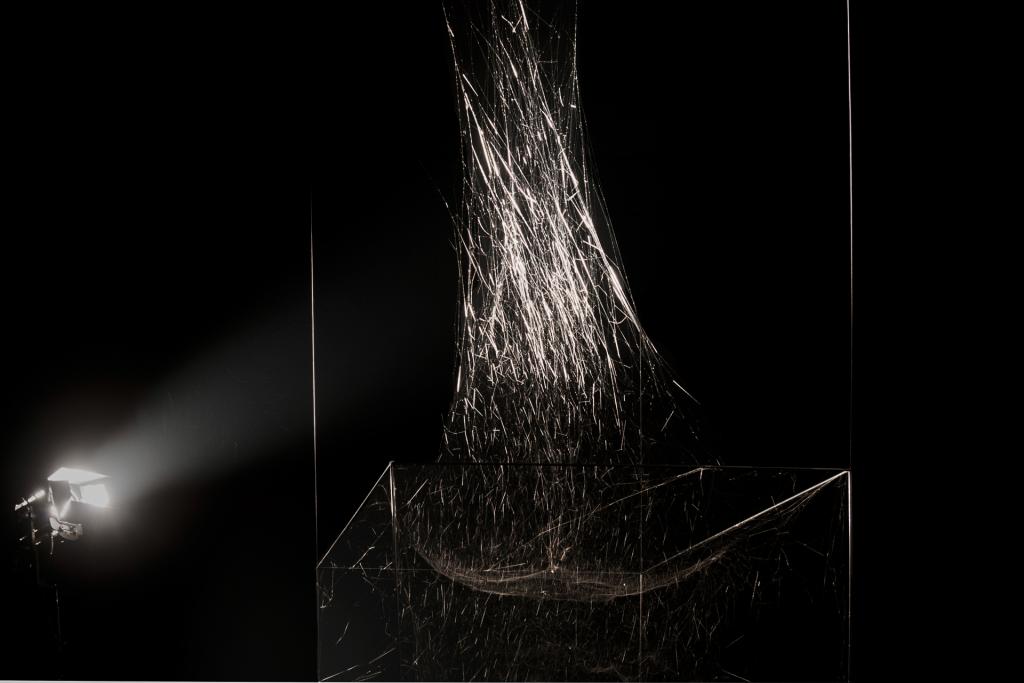

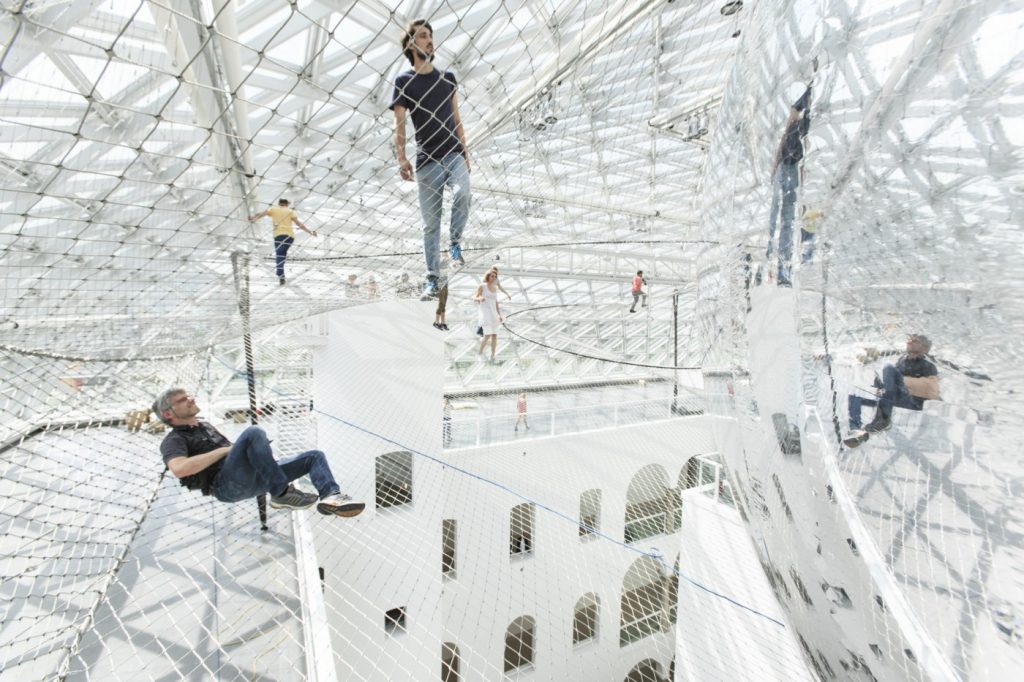
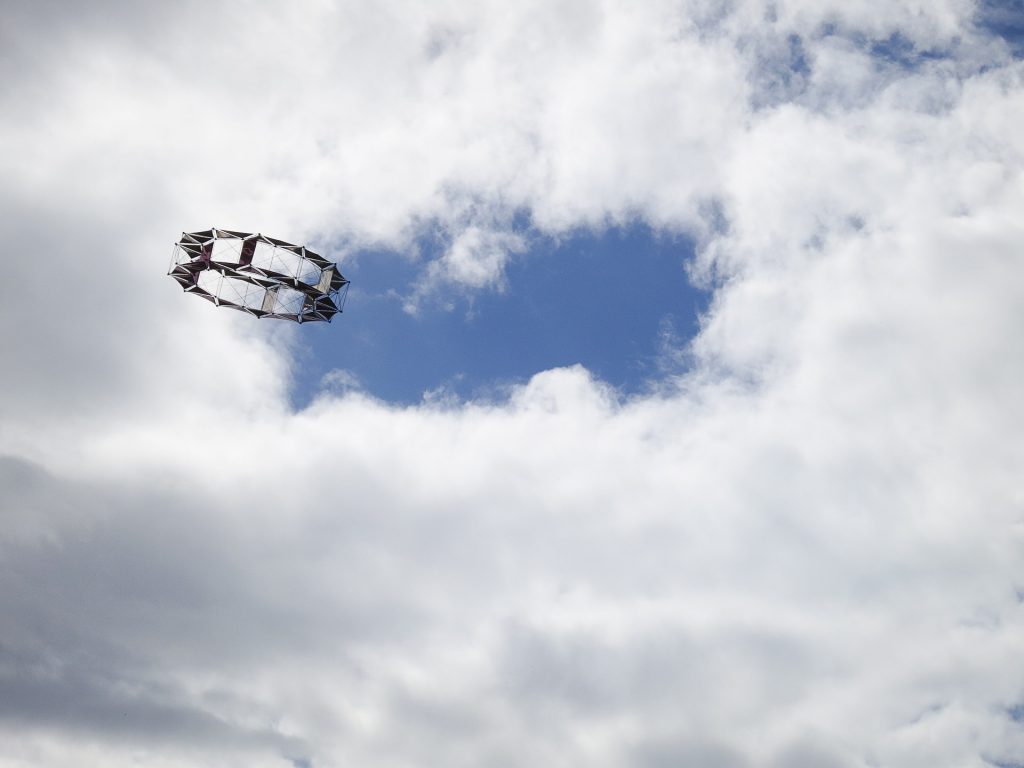
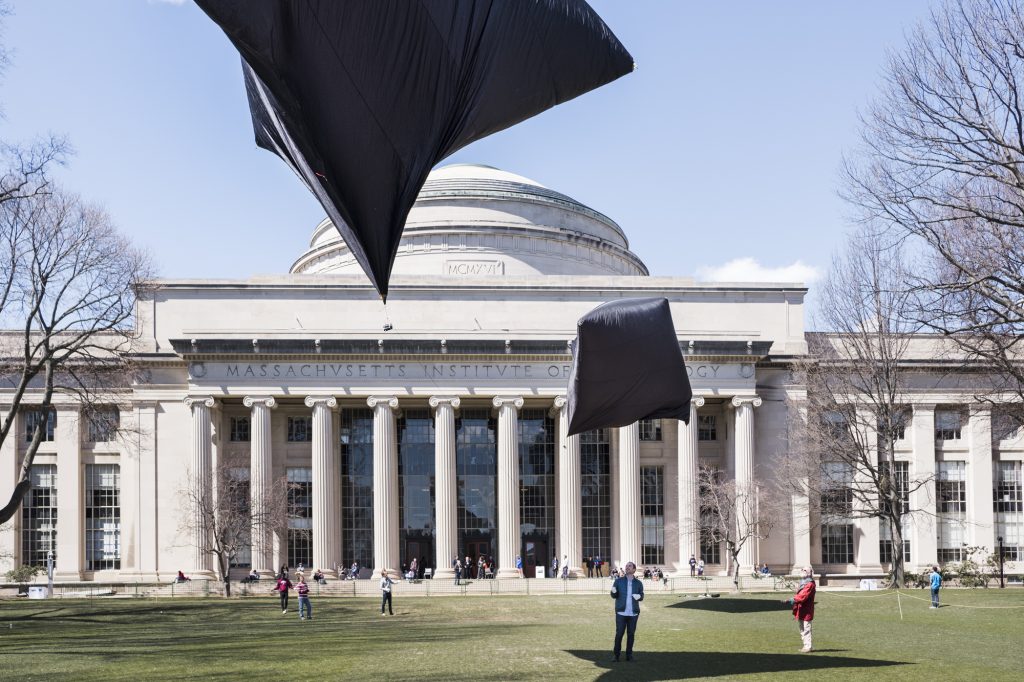

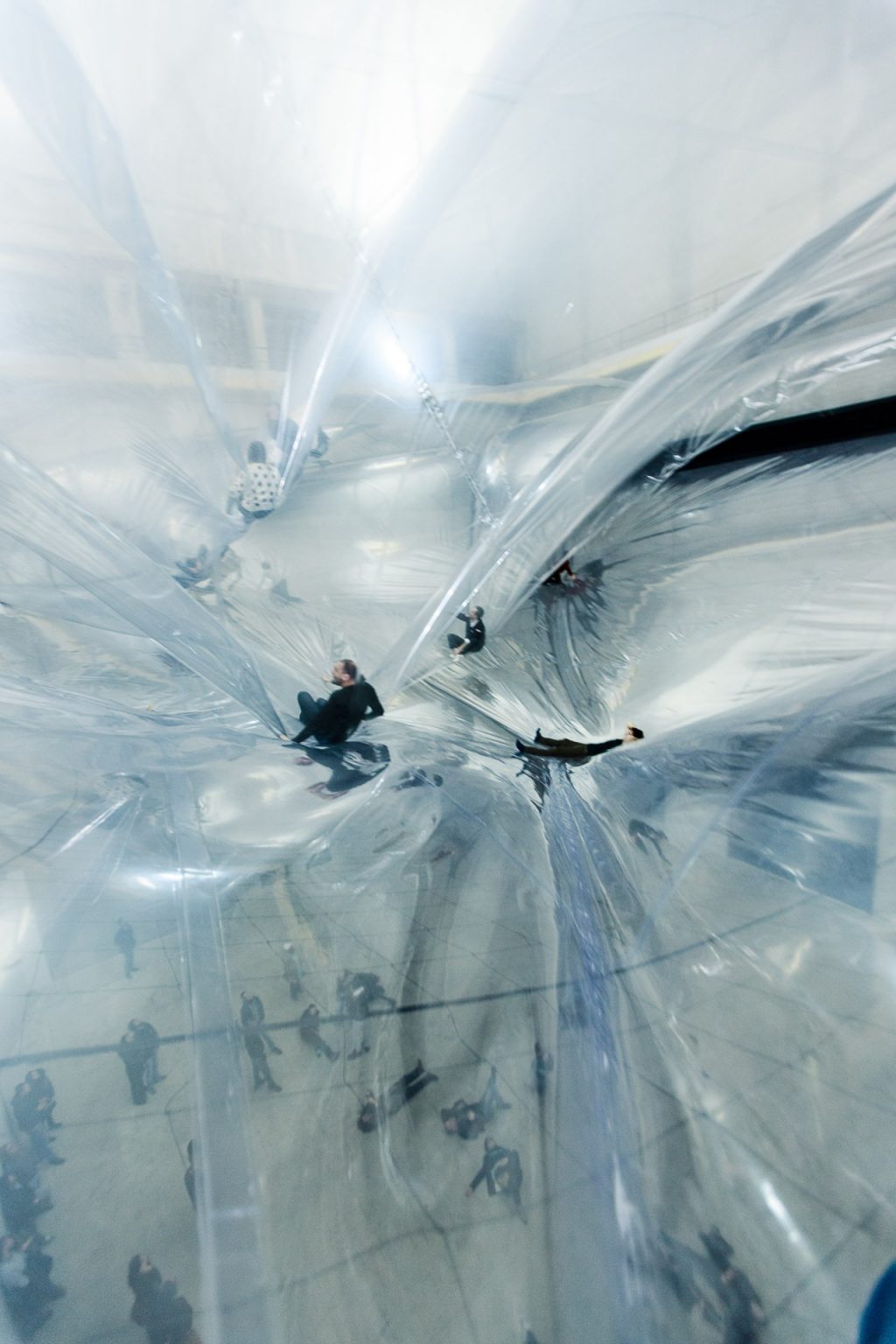

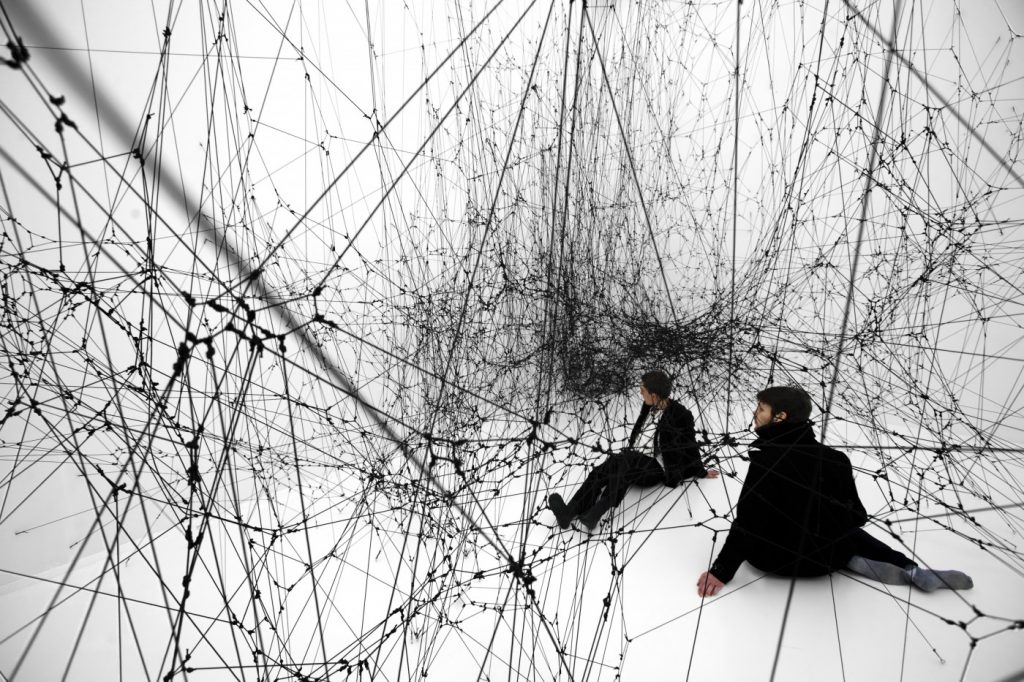
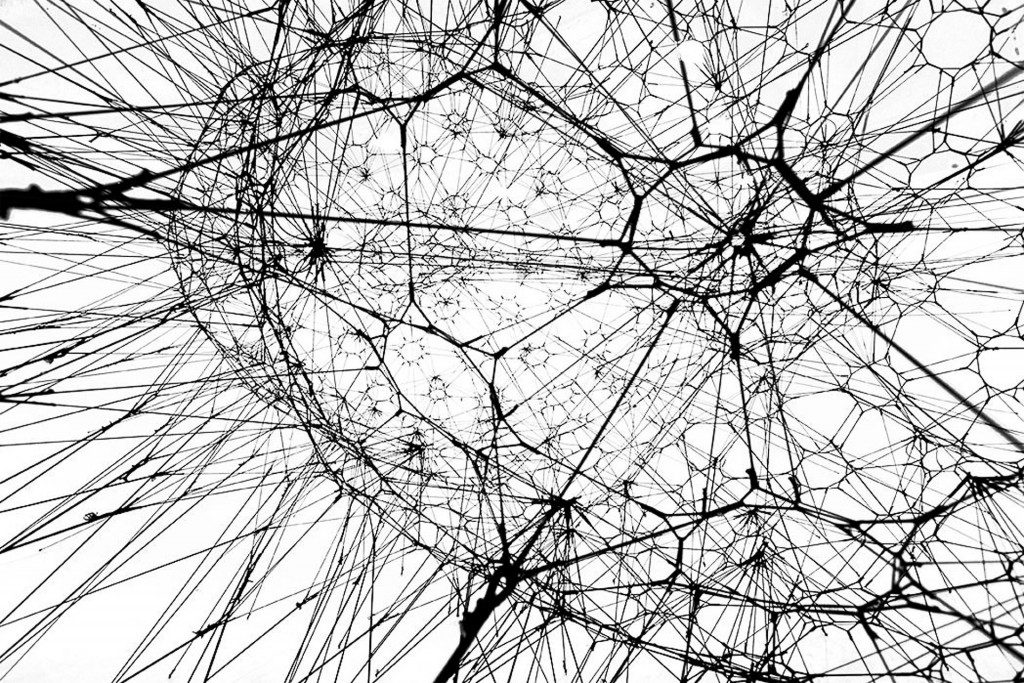
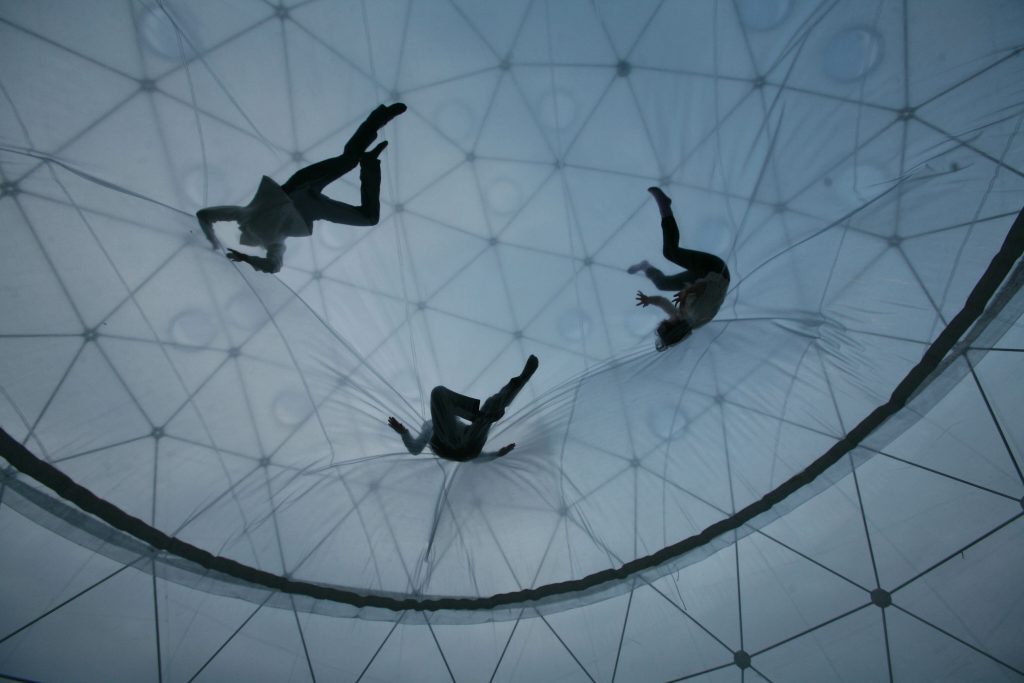
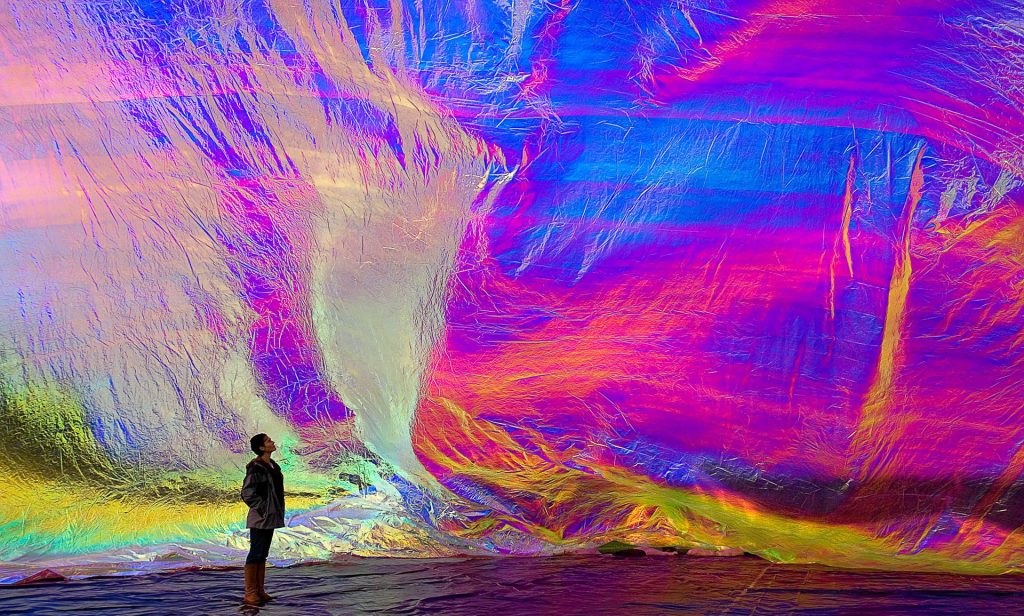
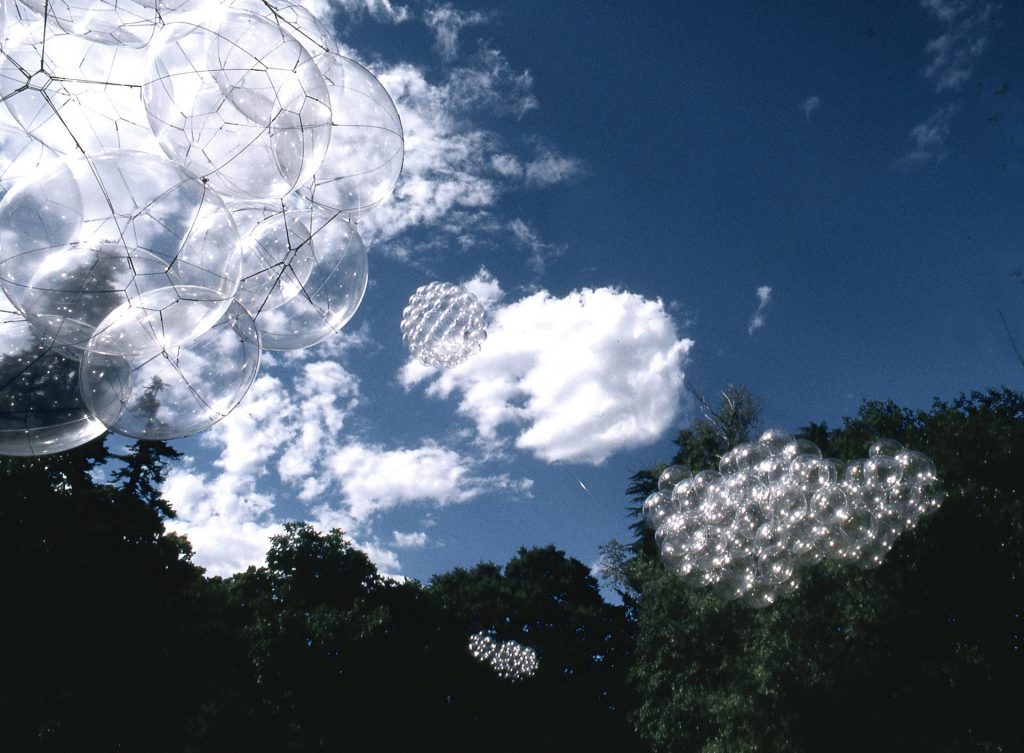
Gravitational Waves evokes an analogy often used by scientists: the comparison between a complex, 3-dimensional spider web, and our “spongy” universe, with galaxies morphing into wall-like sheets, leaving huge voids of nearly empty space. This particular large-scale network can be seen as a reflection of the universe as though it had emerged through a cosmic cataclysm, caused by an entanglement of gravitational waves… making tangible an unfolding and affective understanding of space-time displacement. From this emerges a social space in the very act of becoming, the connection points acting as springboards for a continued symbiosis with our imperceptible universe.
A symbol of interrelation of beings on earth and in space, Gravitational Waves is a heterogeneous immaterial architecture. Each point of interconnection becomes a social node supporting the entanglement of different perspectives. The idea of suspending the void, of capturing and separating it from the surrounding empty space, prompt reflections on the ways we attune with the Universe, floating with our feet on the ground.
Gravitational Waves with Giovanni Amelino-Camelia
Tomás Saraceno’s work has been informed by various scientific epistemologies, ranging from biology and arachnology to cosmology. Studio Tomás Saraceno has collaborated with various scientific institutions, from Massachusetts Institute of Technology (MIT) to Centre national d’études spatiales (CNES) and the Max Planck Institute.
The conceptual and philosophical core that moves this research and aesthetic investigation interrogates the entanglement of forces and agents that shape reality, both inside and outside our sensory ecology. Saraceno’s practice pursues the idea of enabling these other forms of life to emerge in order to show their interlacement; catching and creatively re-inventing the recursive structures that occur in the world, from dust trajectories in the air to clouds, to the Weaire-Phelan geometric model to neuronal nets, from spider webs to the cosmic web. His investigations and works move towards achieving a paradigm shift in our relationship with nature and the environment; one that fosters a deeper awareness of the level of co-dependency between different beings, building a dialogue that is increasingly necessary.
Recently, the detection of gravitational waves through laser interferometers was presented as a proof of Einstein relativity theory, which confirmed it to the scientific community. The consequent sonification of these waves allowed a general public to “hear” them, or, better, to feel spacetime for the first time. This is a milestone not only for our understanding of the universe but can also be read as an expansion of our perceptual relationship with nature, where everything vibrates. As part of an ongoing collaboration we asked Italian physicist Giovanni Amelino-Camelia to reflect on the topic.
Could you explain to us the difference in our knowledge and perception of the Universe before and after Einstein and how the discovery of gravitational waves contributed to such a paradigm shift?
From Separate Time and Space to Spacetime
“The prediction of the existence of gravity waves was made already in 1916 by Albert Einstein, through detailed calculations based on his general-relativity theory”, states scientist and professor Giovanni Amelino-Camelia, who leads quantum-gravity research at the Sapienza University in Rome, Italy. “But they were first observed only a century later, in 2016, which is due to the weakness of gravity waves.”
“One can better appreciate the magnitude of the breakthrough brought by Einsteinian relativity by first contemplating the previous description of space and time, the one adopted by Galileo Galilei and Isaac Newton”, says Amelino-Camelia about the difference in knowledge and perception of the Universe before and after Albert Einstein.
“In that earlier picture space and time were two completely distinct entities, in the most tangible sense for physics: their separation was thought to be observer independent, all observers would share the same time”, he explains. “In the Galileo-Newton picture space was described in terms of a smooth, flat and rigid geometry, something that by analogy one could visualise like the surface of a perfectly levigated and perfectly rigid desk.”
“The absolute rigidity of space also meant that it would not really take part in dynamics: it influenced material particles – at least in the sense that particles were confined to take position in that space – but received absolutely no influence from the material particles. This is the origin of a famous ‘theater analogy’, in which one describes Galileo-Newton space – and time – as the stage in which material particles play their roles as actors.”
“Already the first phase of the Einsteinian revolution, the 1905 special-relativity phase, changed this picture rather significantly. We came to appreciate that space and time are not separate entities. It still makes sense for a single observer to keep a separate description of space and time, but this separation is not observer-independent, different observers have a different time.”
“Objective observer-independent laws should all be formulated in terms of a single entity, spacetime. This is deeply connected with the speed-of-light limit: for two observers to have the same time, it would mean that they could have perfectly synchronized clocks, but perfect synchronization of all clocks logically requires infinite speeds. This is the Galileian relativistic theory, on which Newtonian dynamics is based, allowed for infinite speeds, but that abstraction was of course given up once the speed-of-light limit was established.”
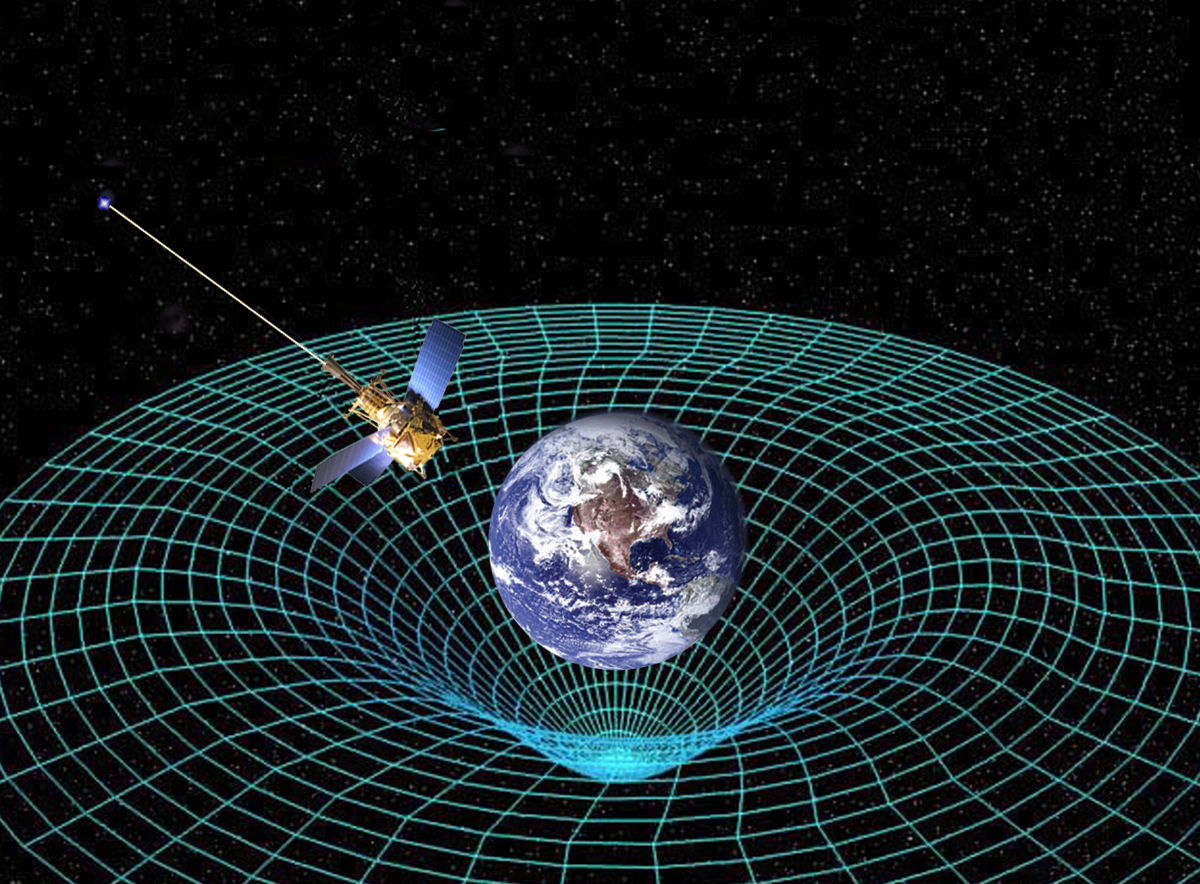
Artist concept of Gravity Probe B orbiting the Earth to measure space-time, a four-dimensional description of the universe including height, width, length, and time. Source: NASA
Waves of Curvature of Spacetime
“The Einsteinian revolution reached its full maturity with the second phase, the general-relativistic description of gravitational phenomena of 1915”, continues Amelino-Camelia, who is also national head of the research area ‘quantum gravity theory and phenomenology’ for the Istituto Nazionale di Fisica Nucleare in Italy. “Einstein made us appreciate that gravity actually is not a force, at least not in the standard sense. It is not the result of the direct action of one particle on another. Each particle acts on the geometry of spacetime and then their trajectories are just free-fall trajectories in that geometry.”
“The attraction of the Sun on the Earth, for example, can be described by analogy by holding very strongly – with high tension – a bed sheet and placing on it two spheres of very different mass: both spheres will curve the sheet but the heavier one will curve it more strongly and the lighter one will fall on the heavier one just because of that curvature present in the sheet”, he explains. “The bed-sheet analogy also gives a rather solid intuition for the nature of gravity waves. It’s a familiar experience – one that children appreciate most vividly – the one of creating waves with bed sheets and indeed Einsteinian gravity predicts that too.”
“This is what gravity waves are – waves of curvature of spacetime. The most amazing implication of the Einsteinian revolution is that it allowed us to appreciate that spacetime is not just the stage for particle dynamics: spacetime itself takes part in dynamics, acting on the material particles and being acted upon by material particles, which curve it and wave it.”
New Actors in Nature’s Play
“Spacetime no longer is just the stage; it’s an actor in ‘Nature’s play’ just like all other aspects of Nature. Spacetime is one more actor on stage but is not a loud speaker and this is why science could progress for centuries without discovering the dynamical properties of spacetime. The laws that govern spacetime dynamics are such that spacetime is hugely stiff – it bends and waves but only so very lightly.”
“The gravity waves that we observed in 2016 were produced by one of most violent collisions our Universe can host, the final spiraling dance through which two black holes collapse on each other. That humongous burst of energy only amounted to effects on our gravity-wave observatories at a scale of about 10(-19)meters, a distance scale more than a million times smaller than the size of an electron,” explains Amelino-Camelia. “It took us a century to develop the technology and the observational strategies for appreciating effects so minute. But now it’s like we see the Universe in a whole different way.”
“Mankind has always looked at the sky with curiosity. Surely also prehistorical humans did that, and what they saw was electromagnetic radiation – the electromagnetic radiation with frequency within the narrow range of sensitivity of our eyes, which we call ‘light’. With Galileo and the telescope we managed to observe astros much better, but still the measuring instrument was our eye. What the telescope saw was electromagnetic radiation, but thanks to smart use of lenses we were able to see astros in much more detail.”
“Over the centuries, telescopes were much refined of course. Our modern telescopes don’t use the eye as instrument, and are able to see electromagnetic radiation also of frequencies much above – or below – the range of frequencies to which our eyes are sensitive, but still all this was in electromagnetic waves. Now we start to see astros in electromagnetic waves and in gravity waves. It’s a bit like adding sound to silent movies. Astrophysics is being empowered enormously and surely over the next decade the horizons of our knowledge will be broadened very significantly.”_
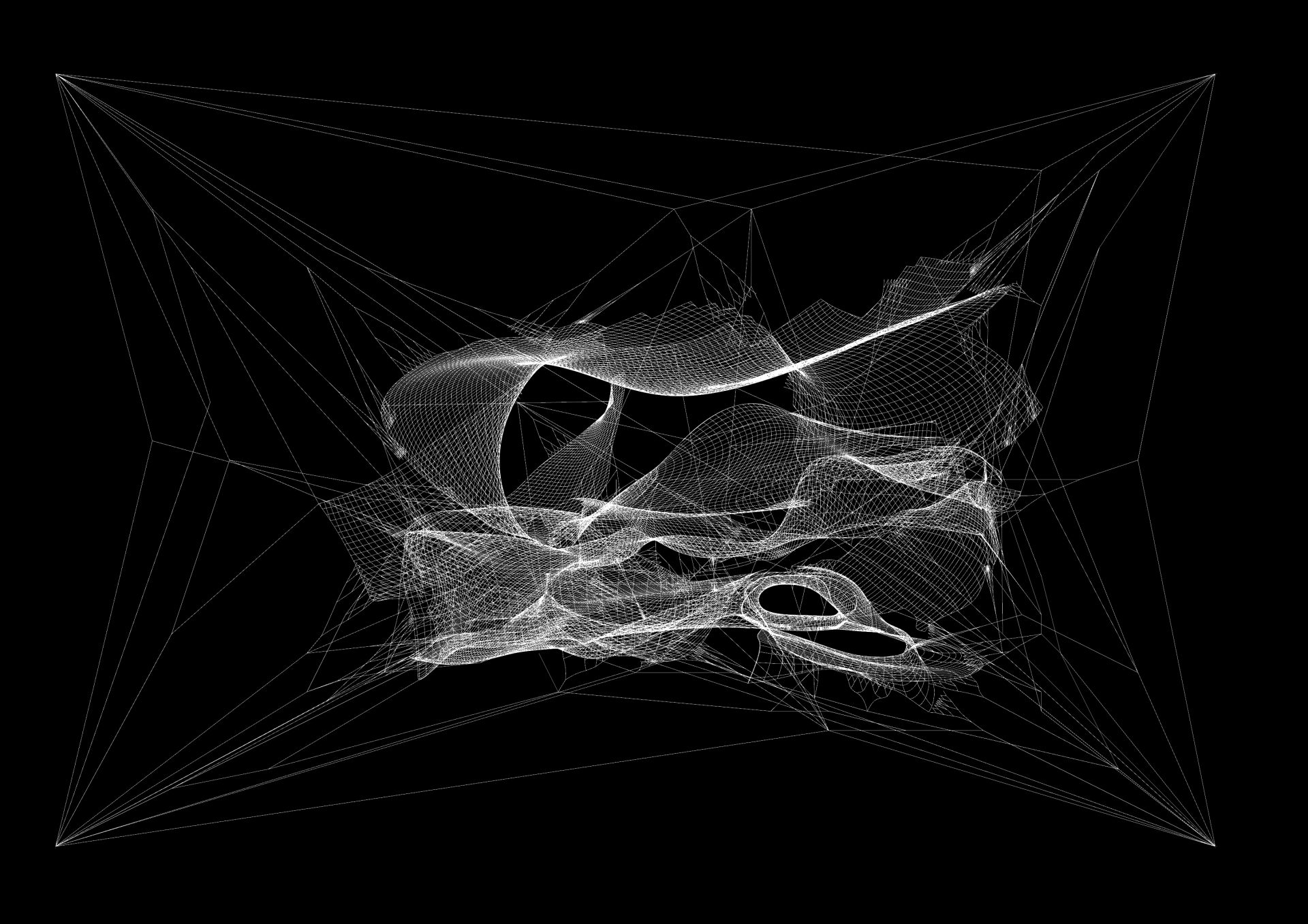
...